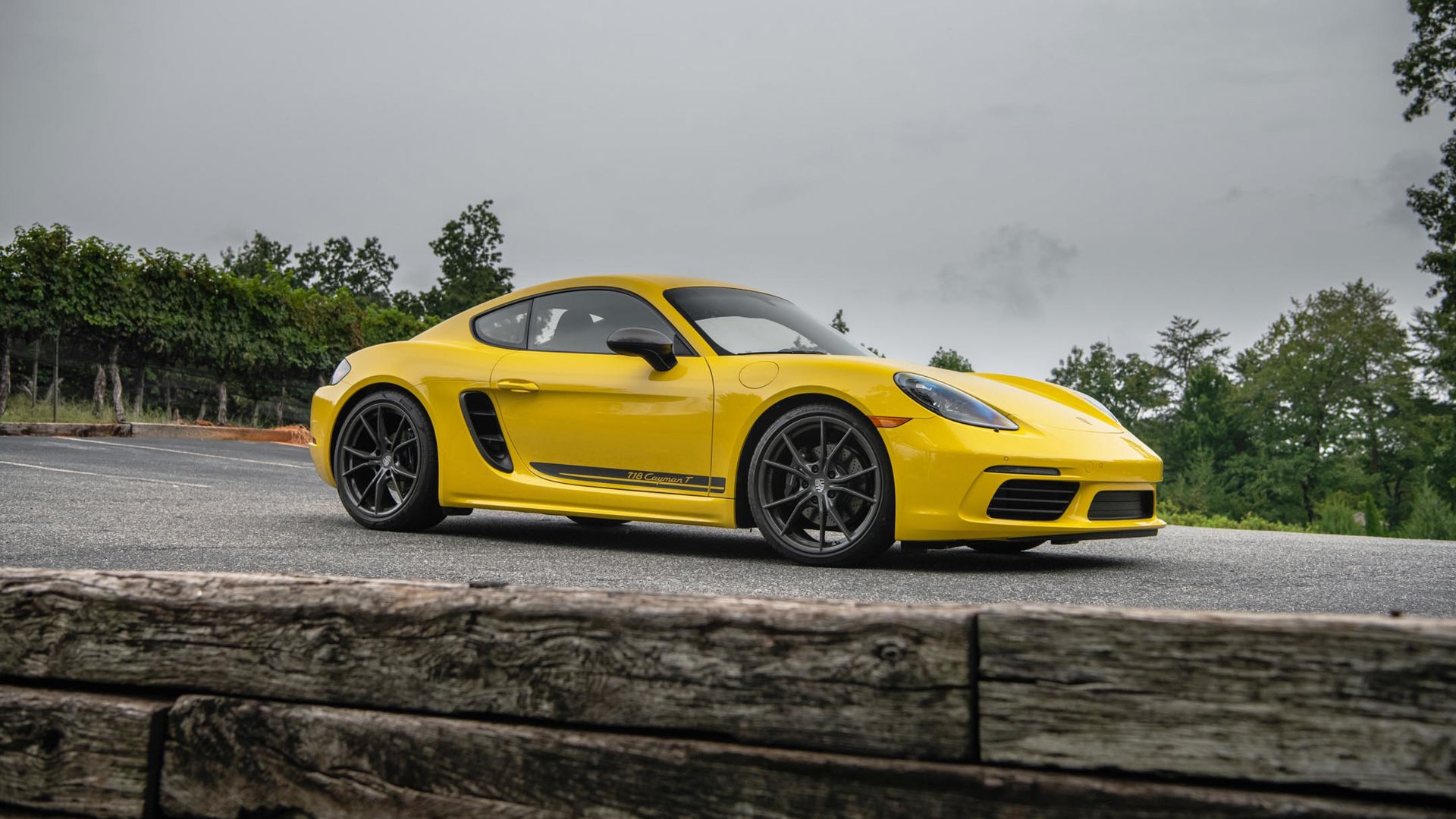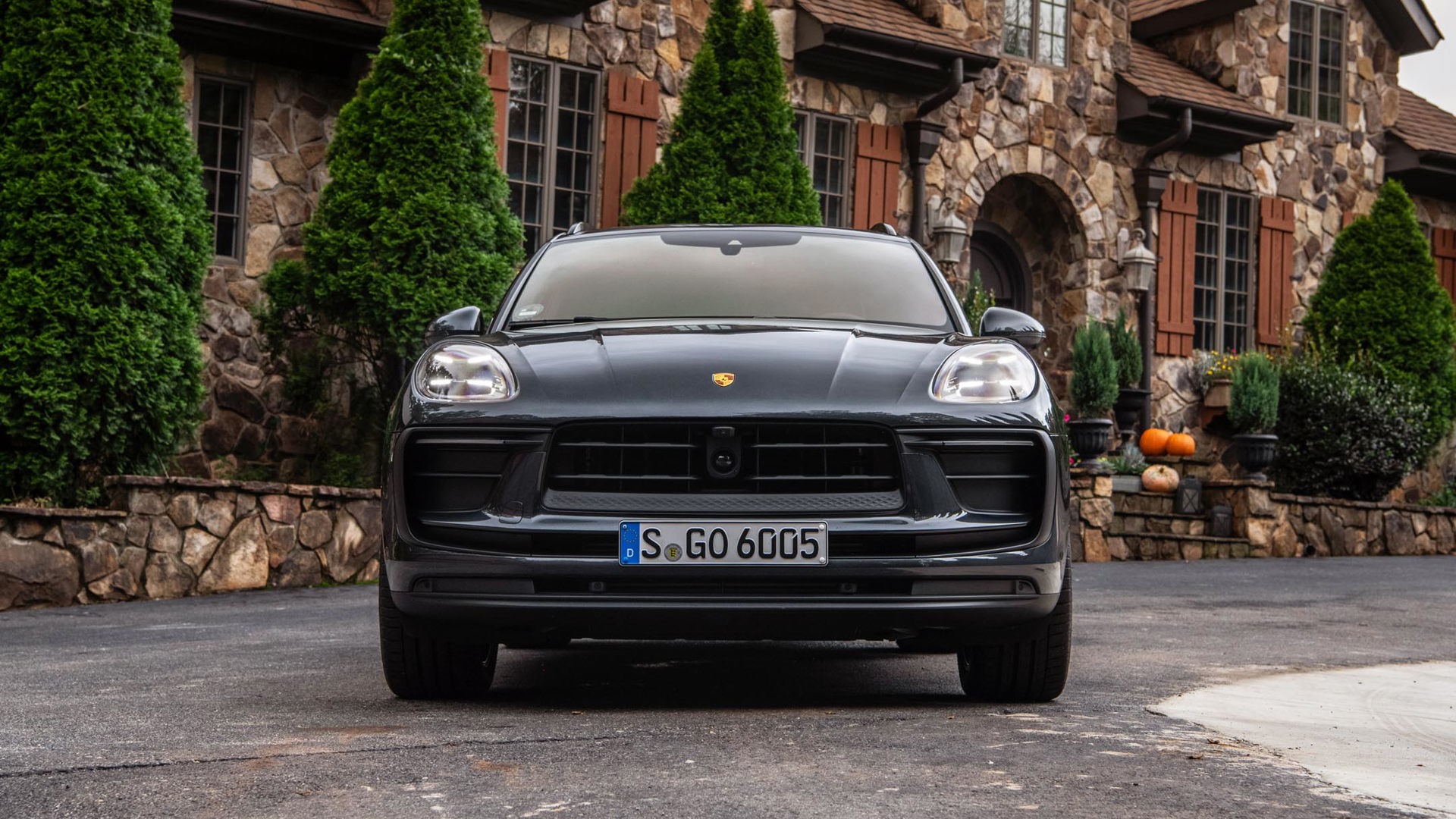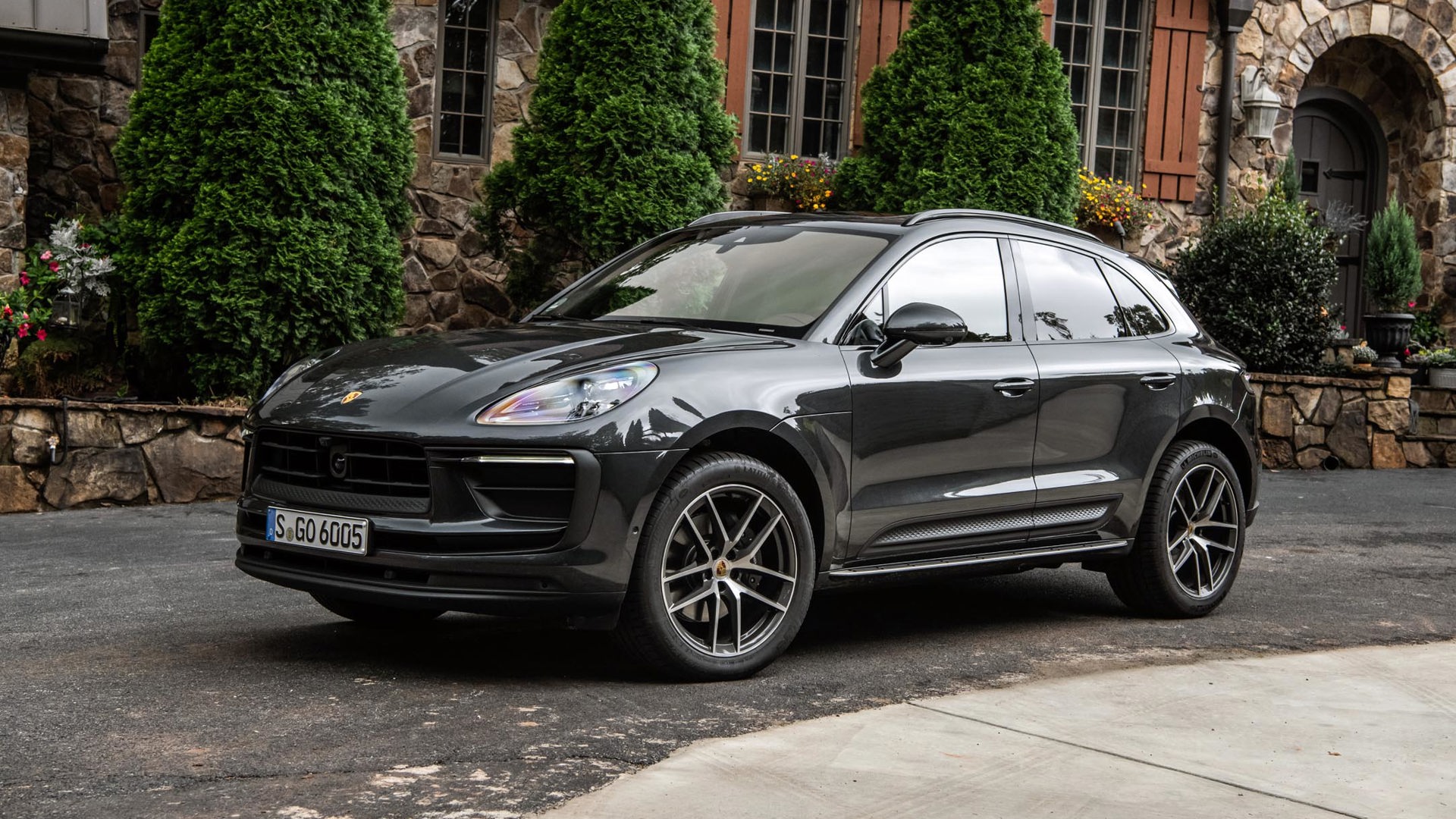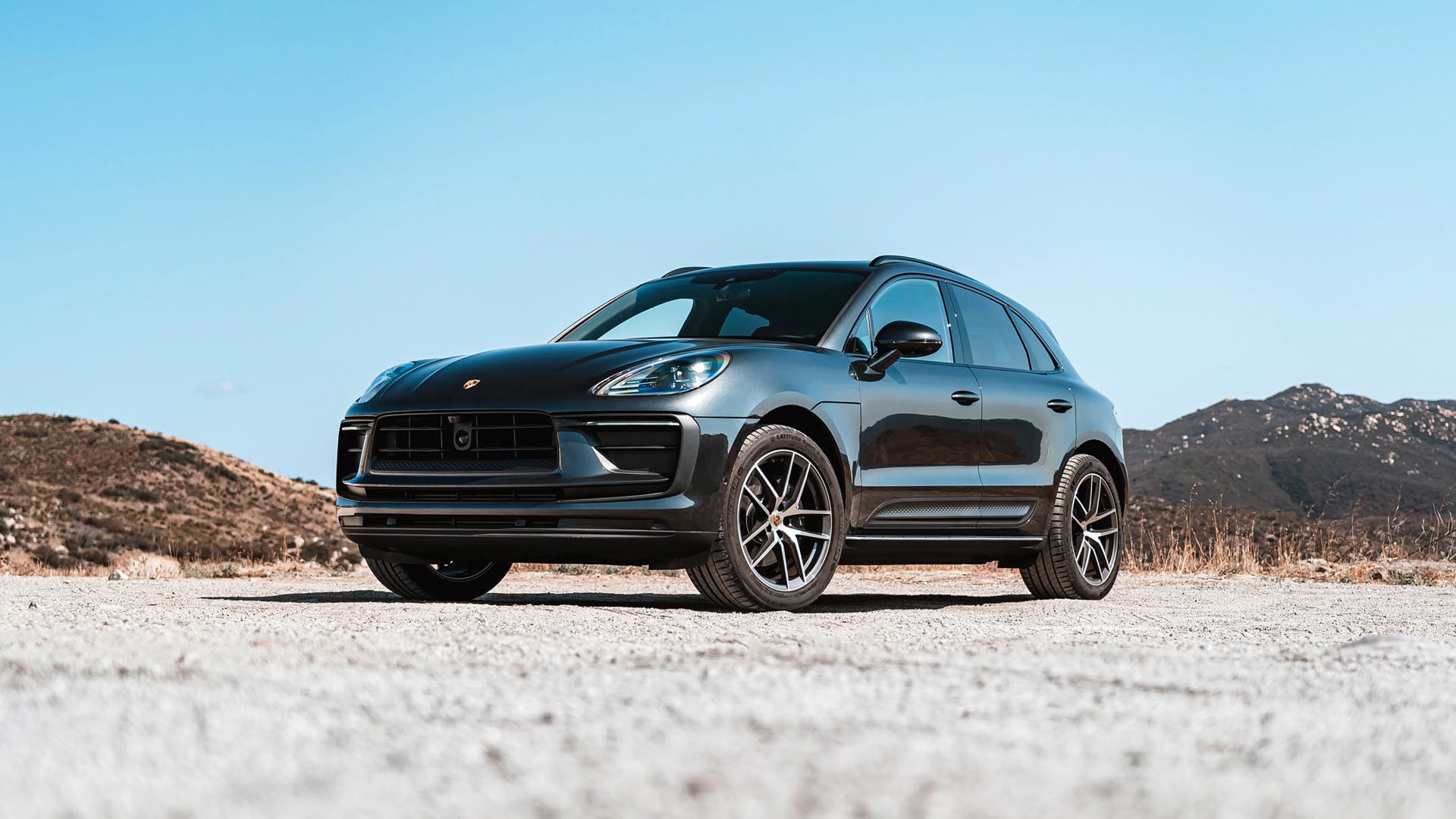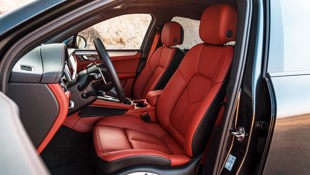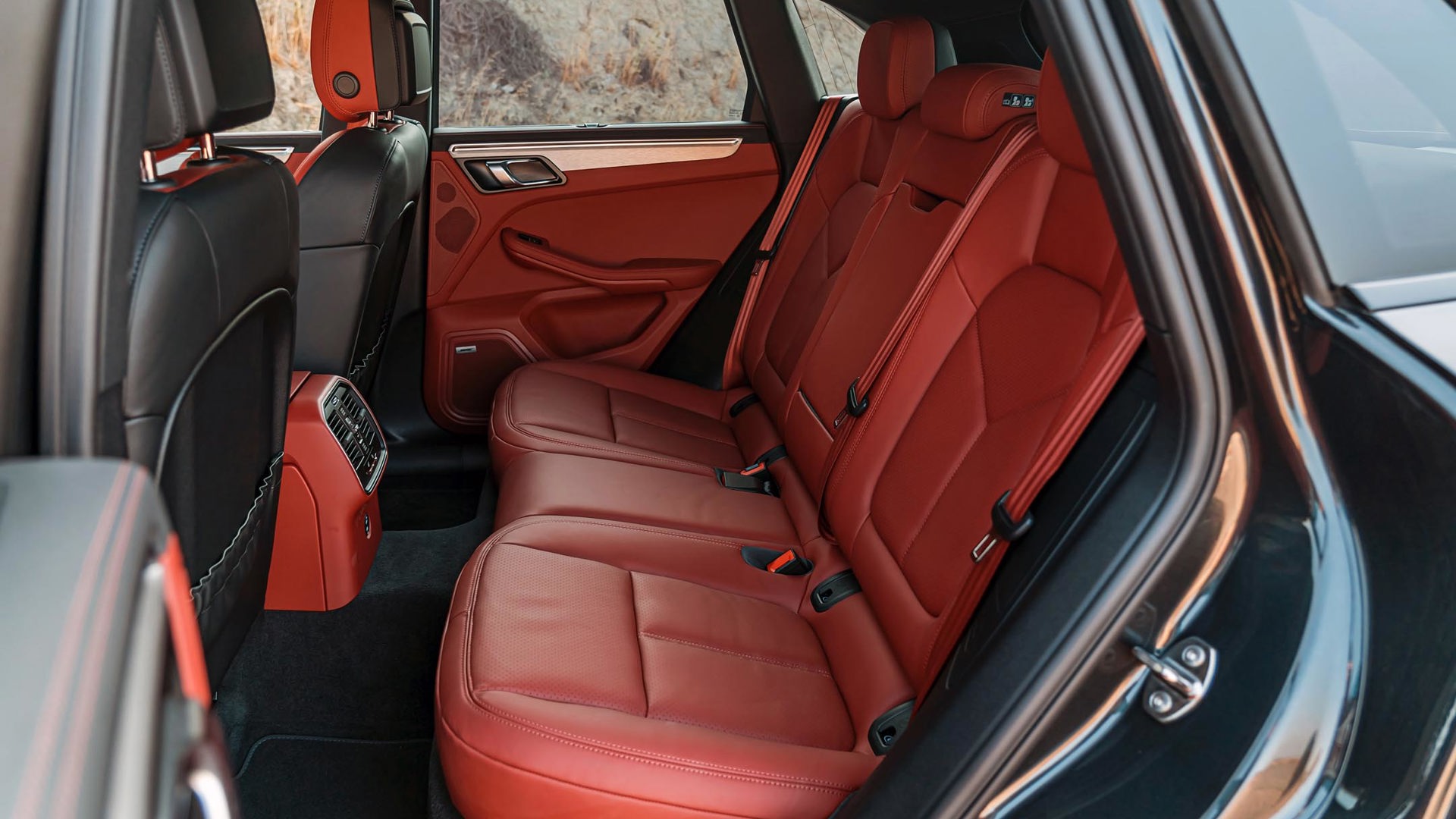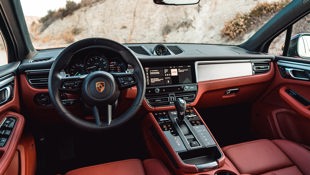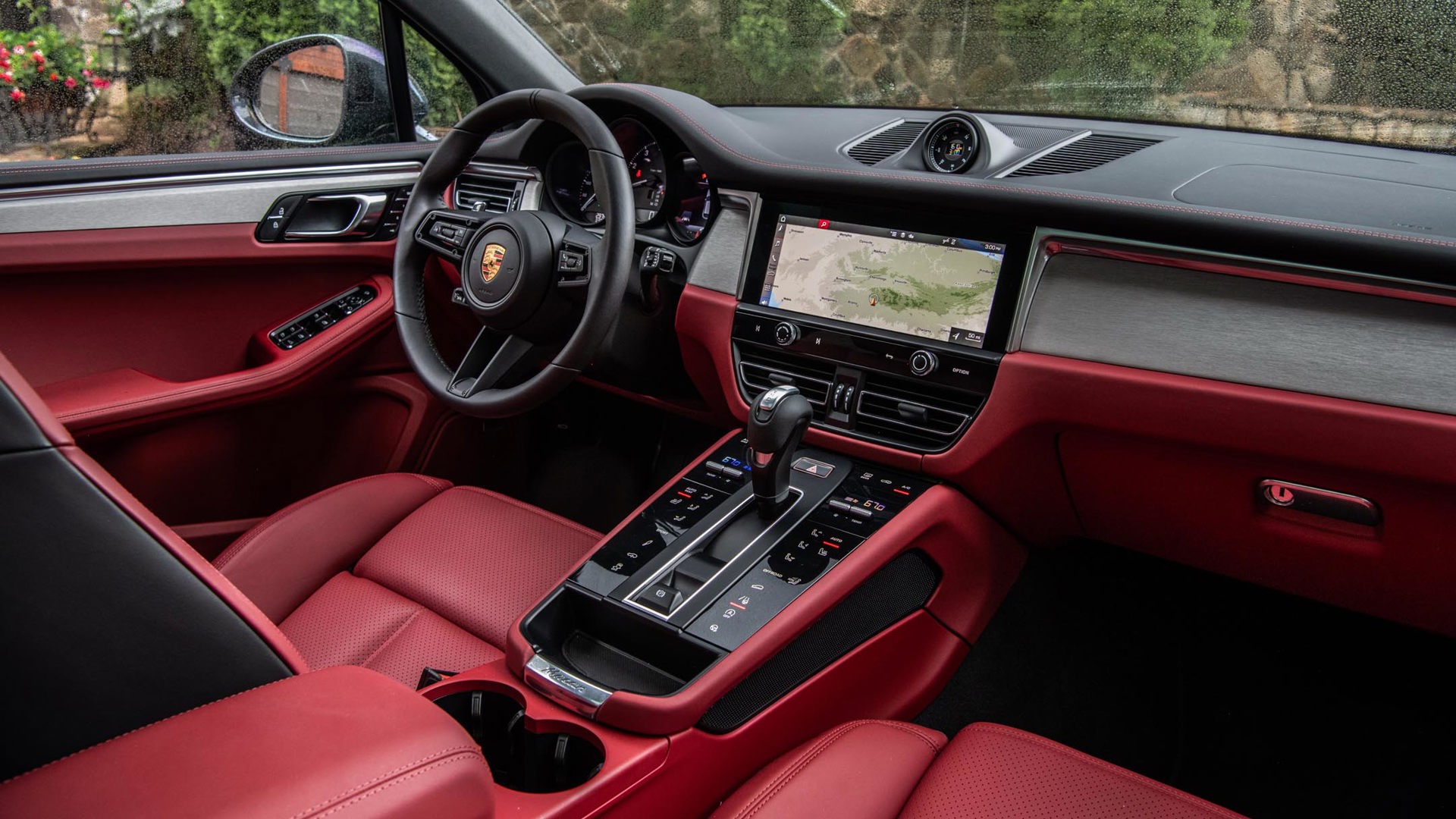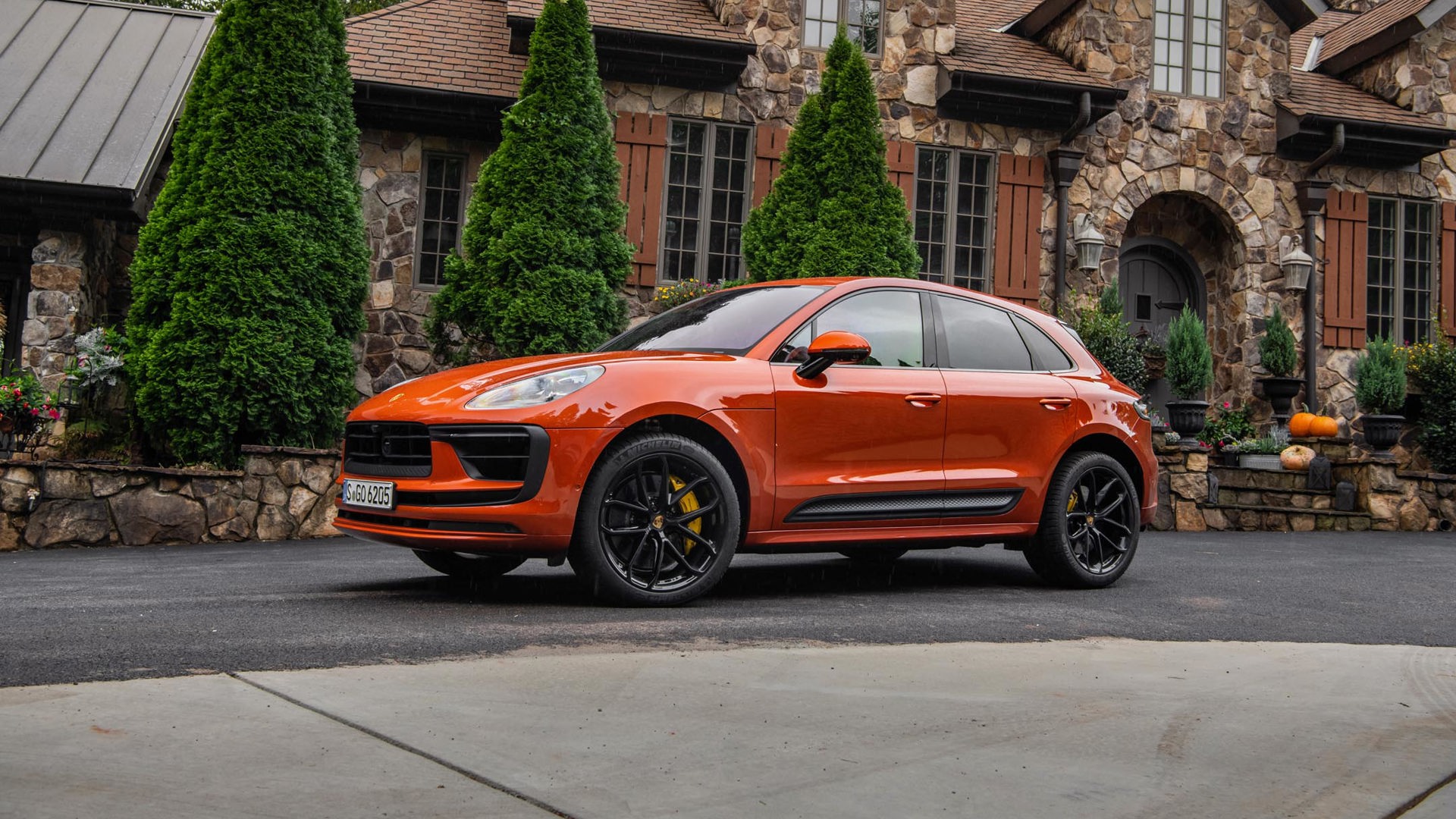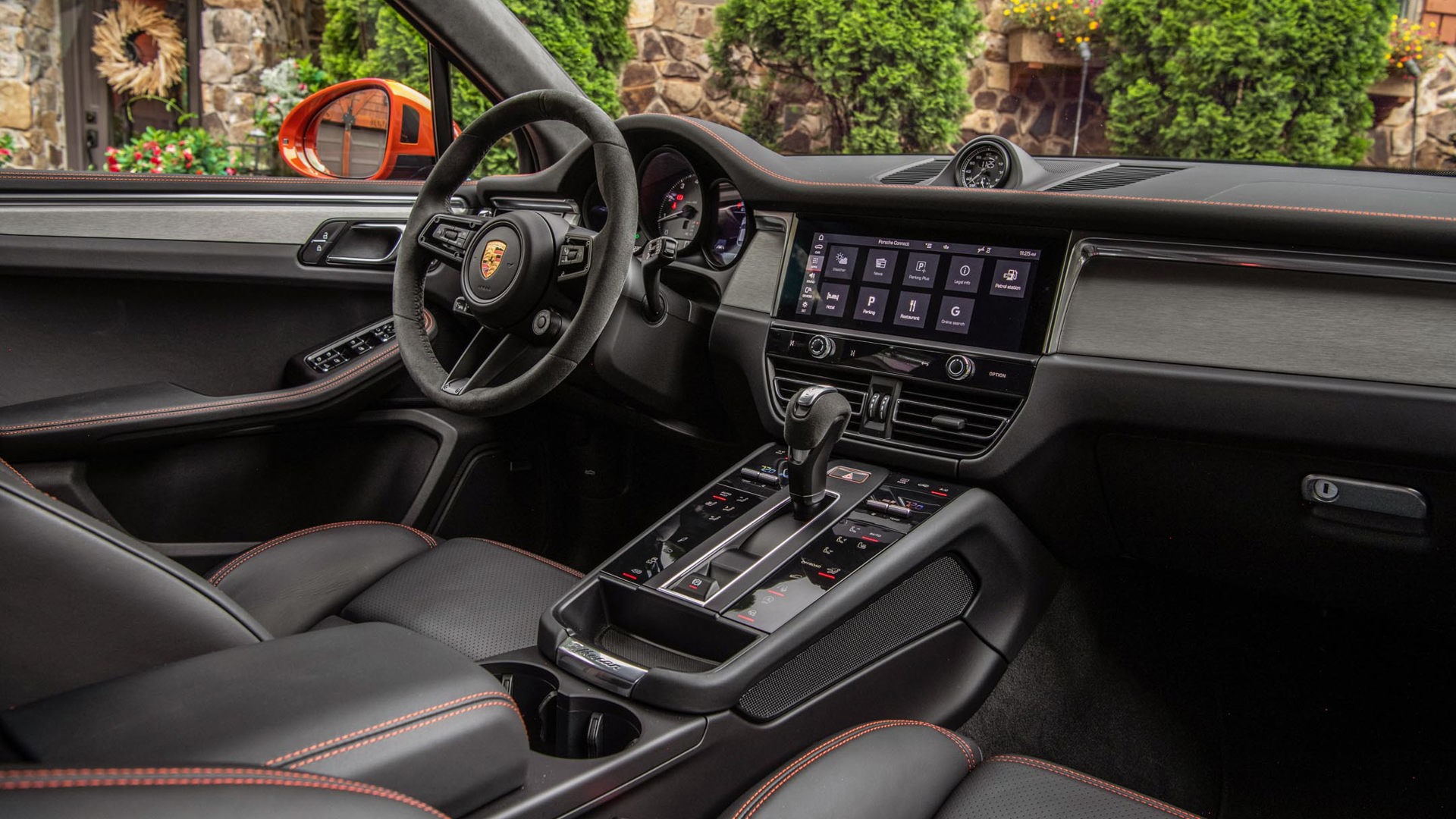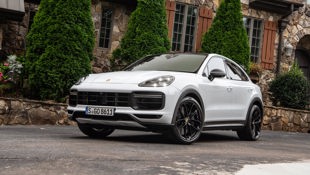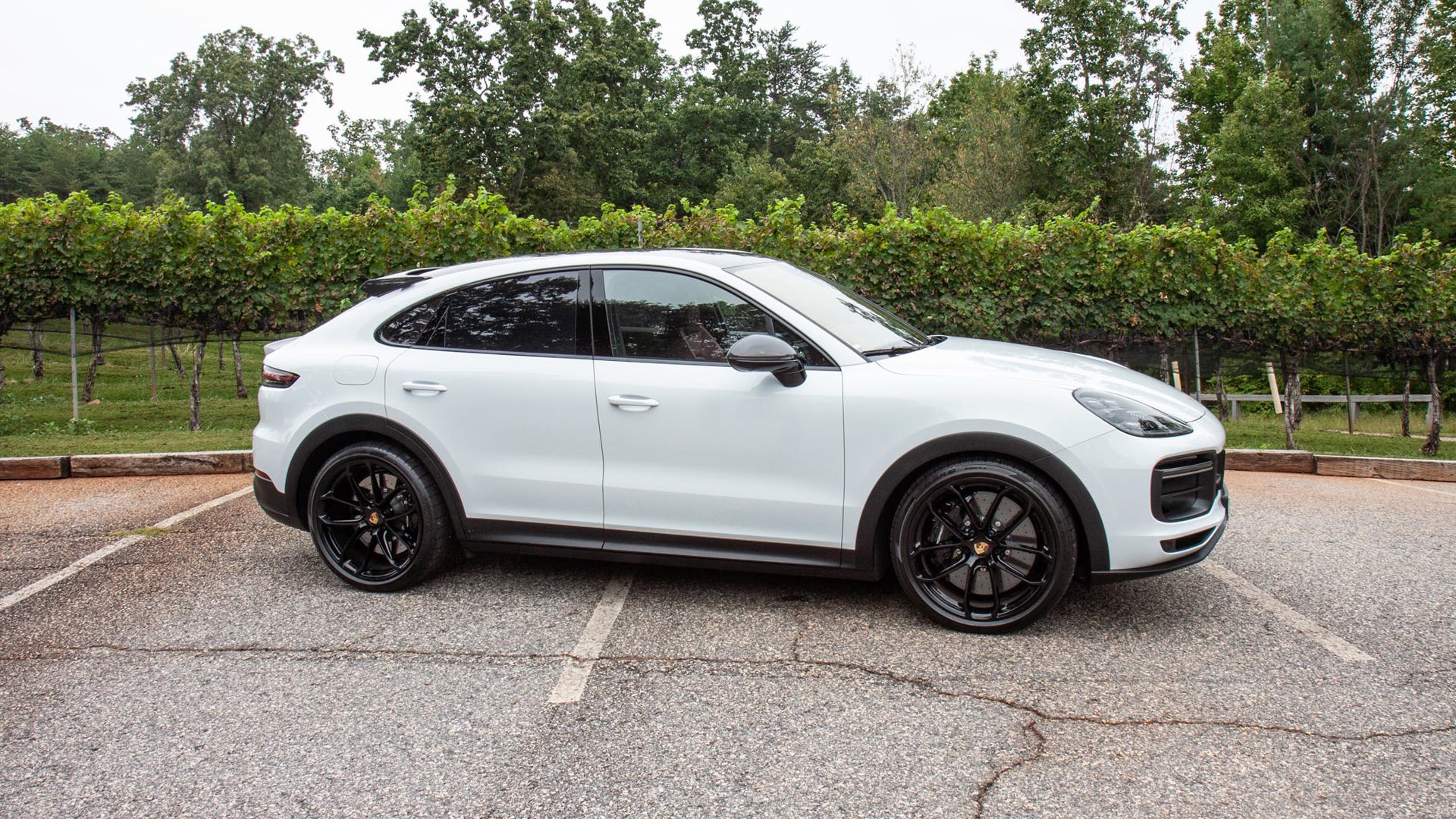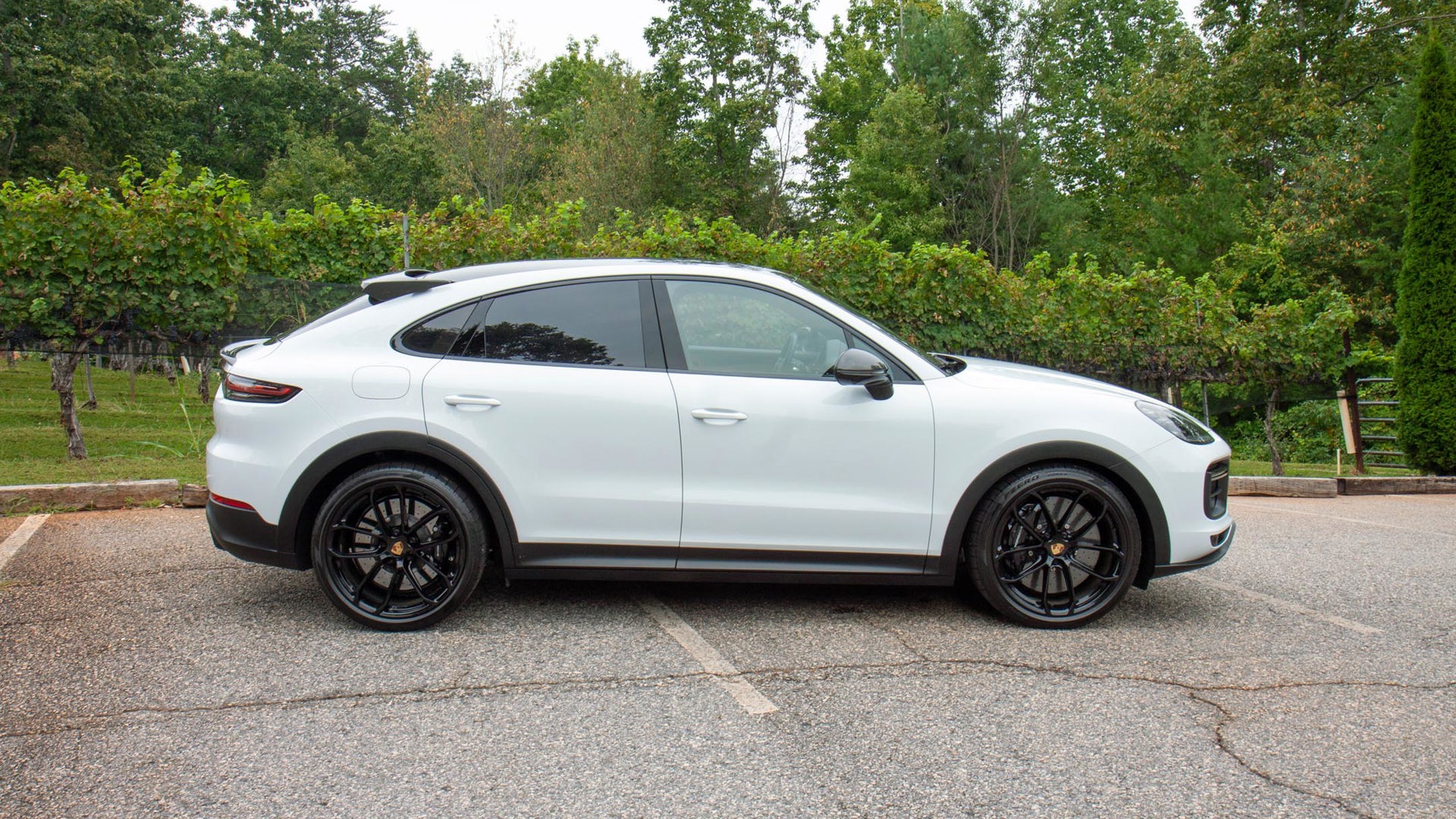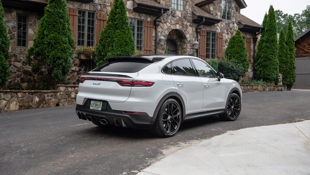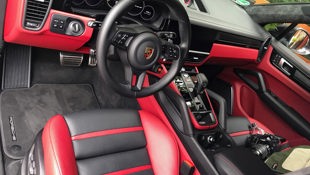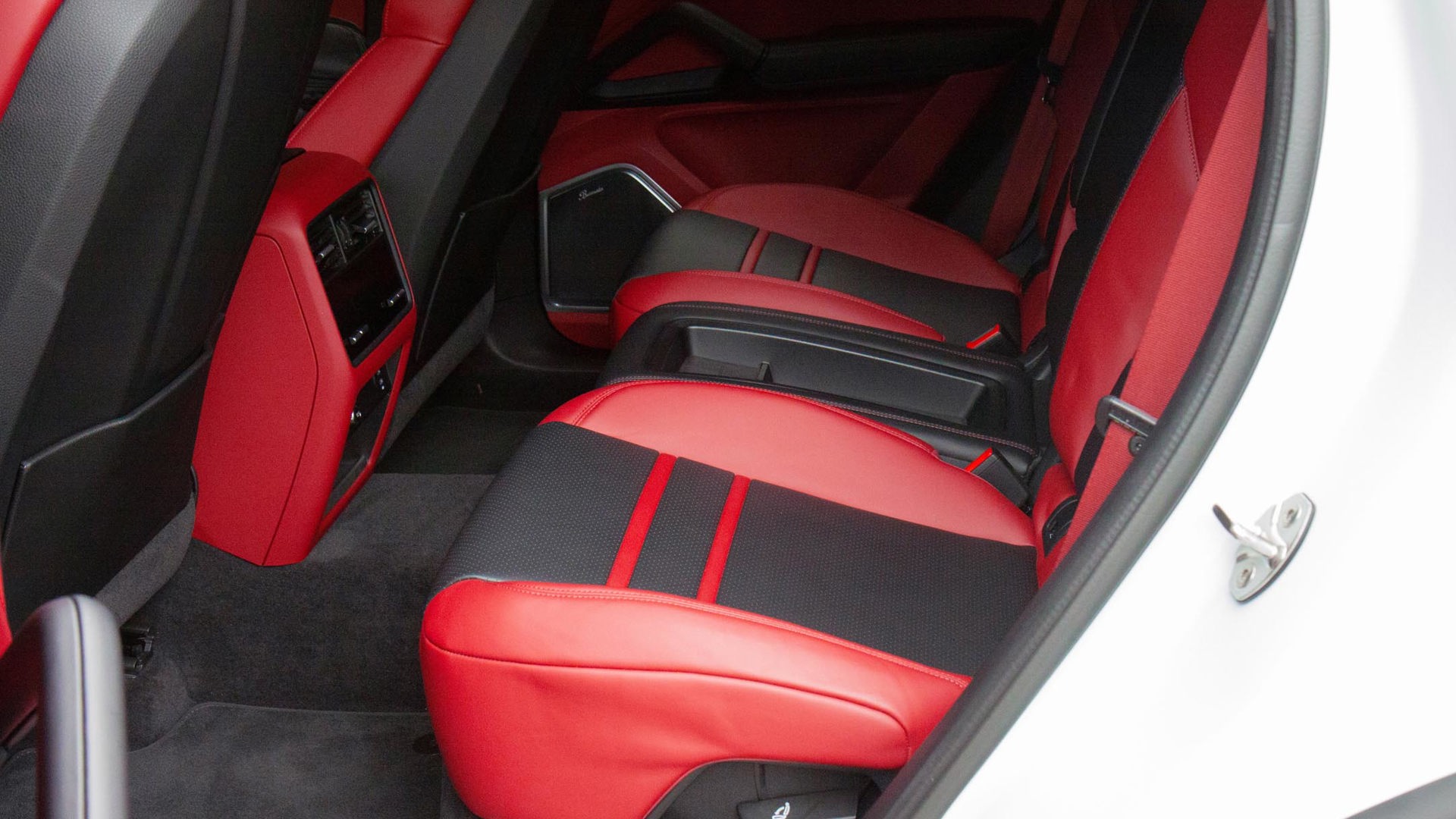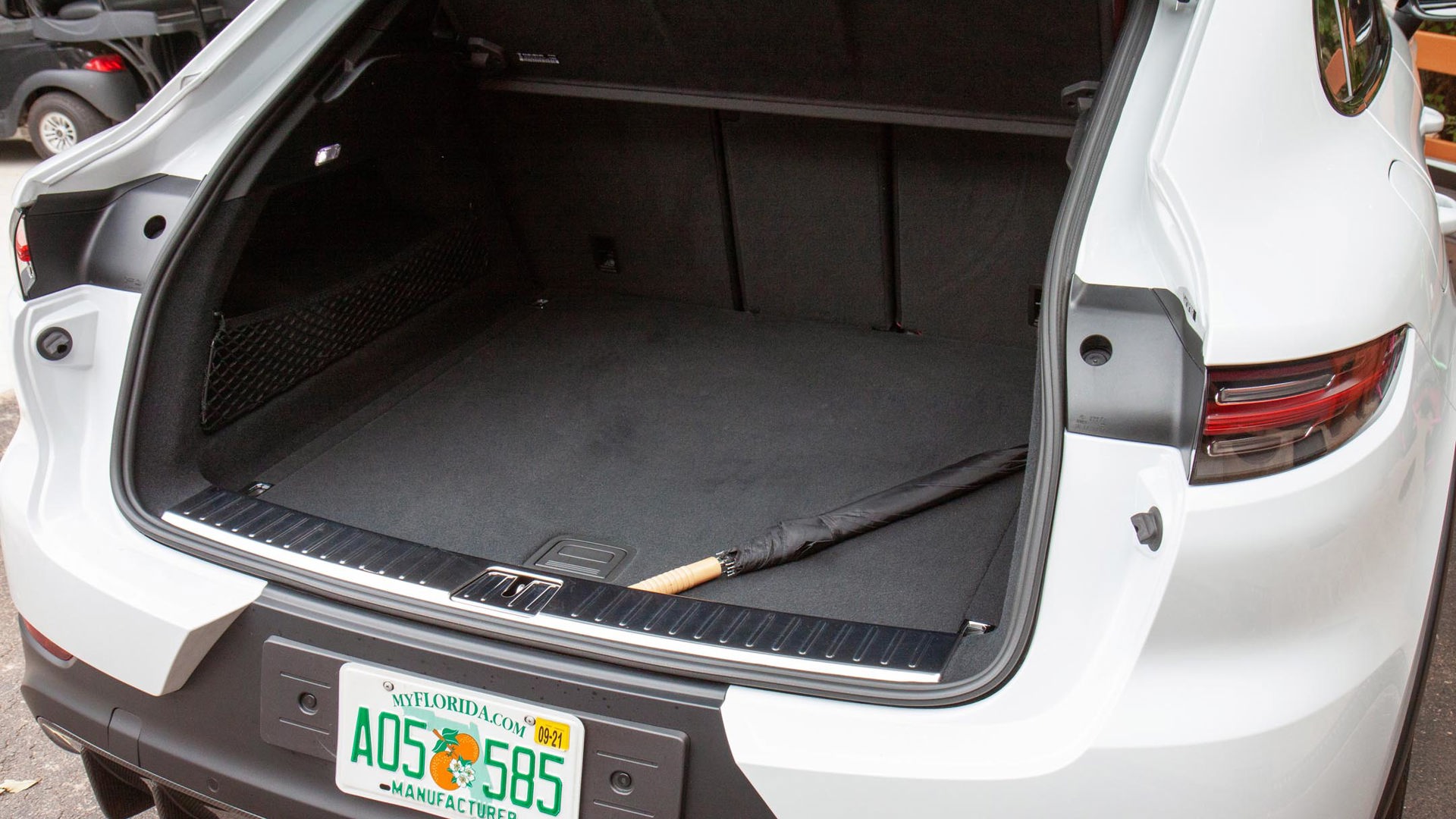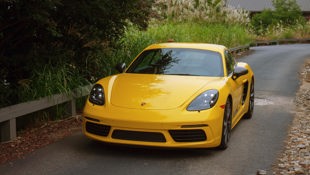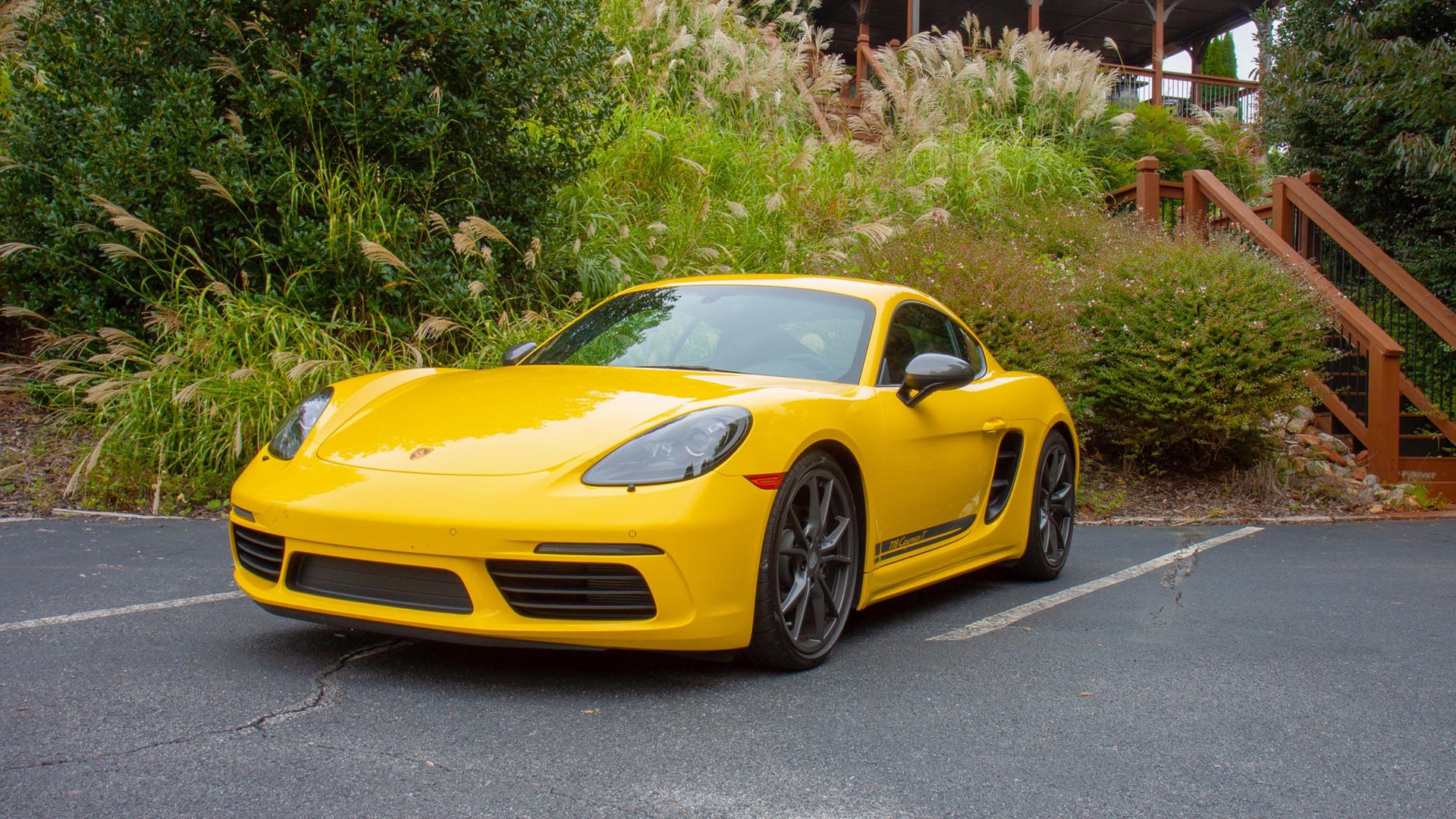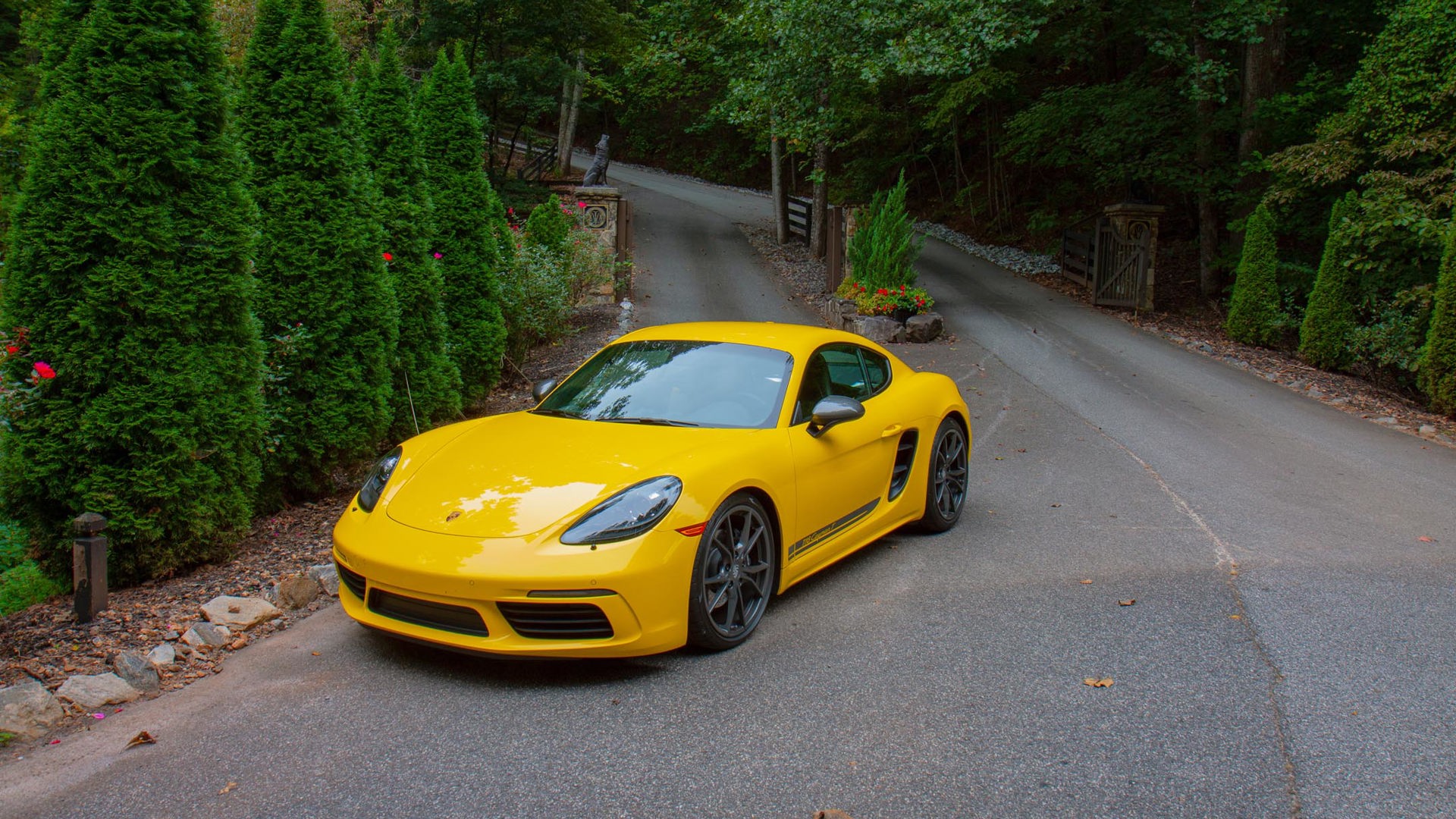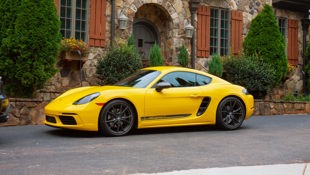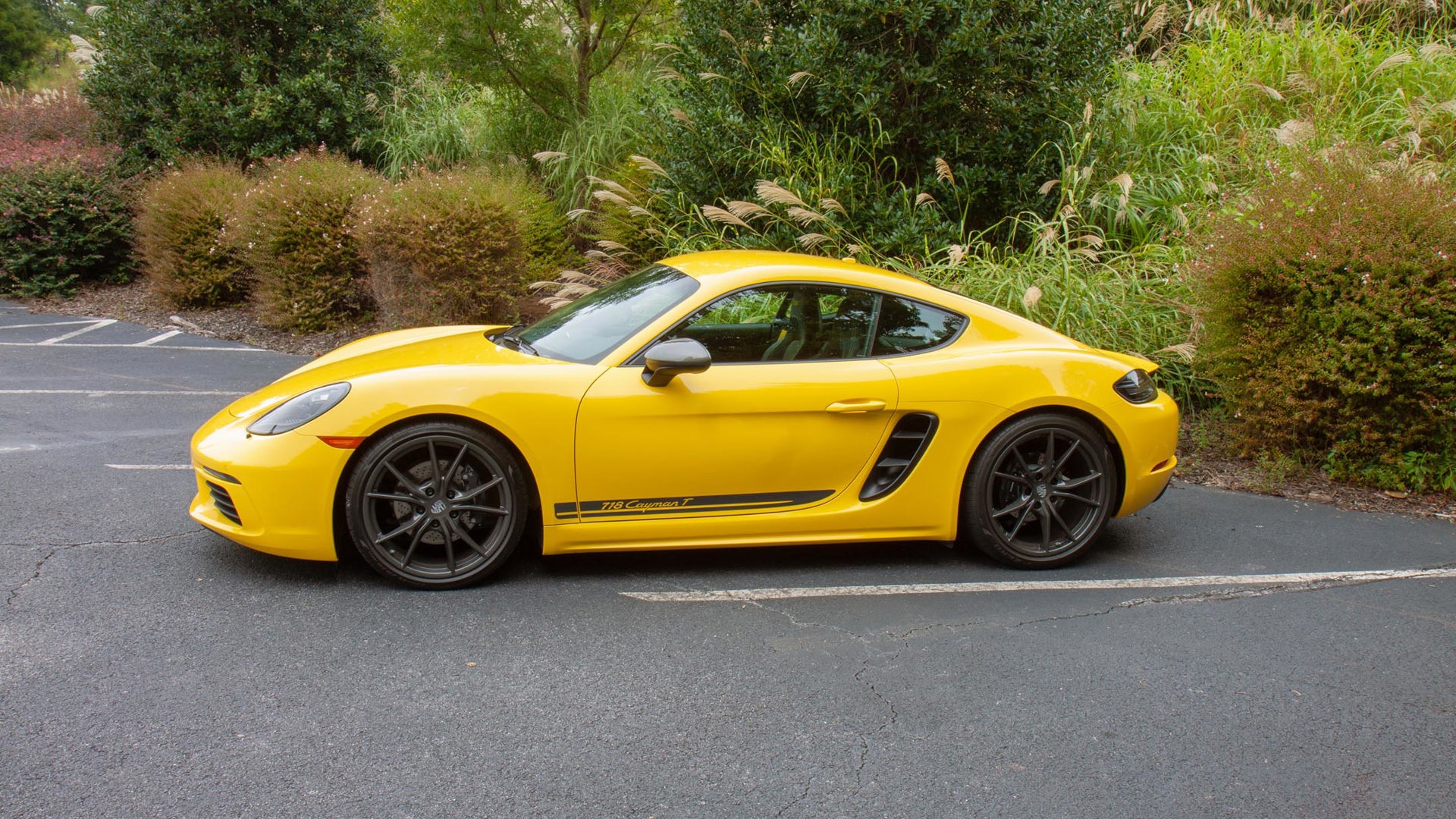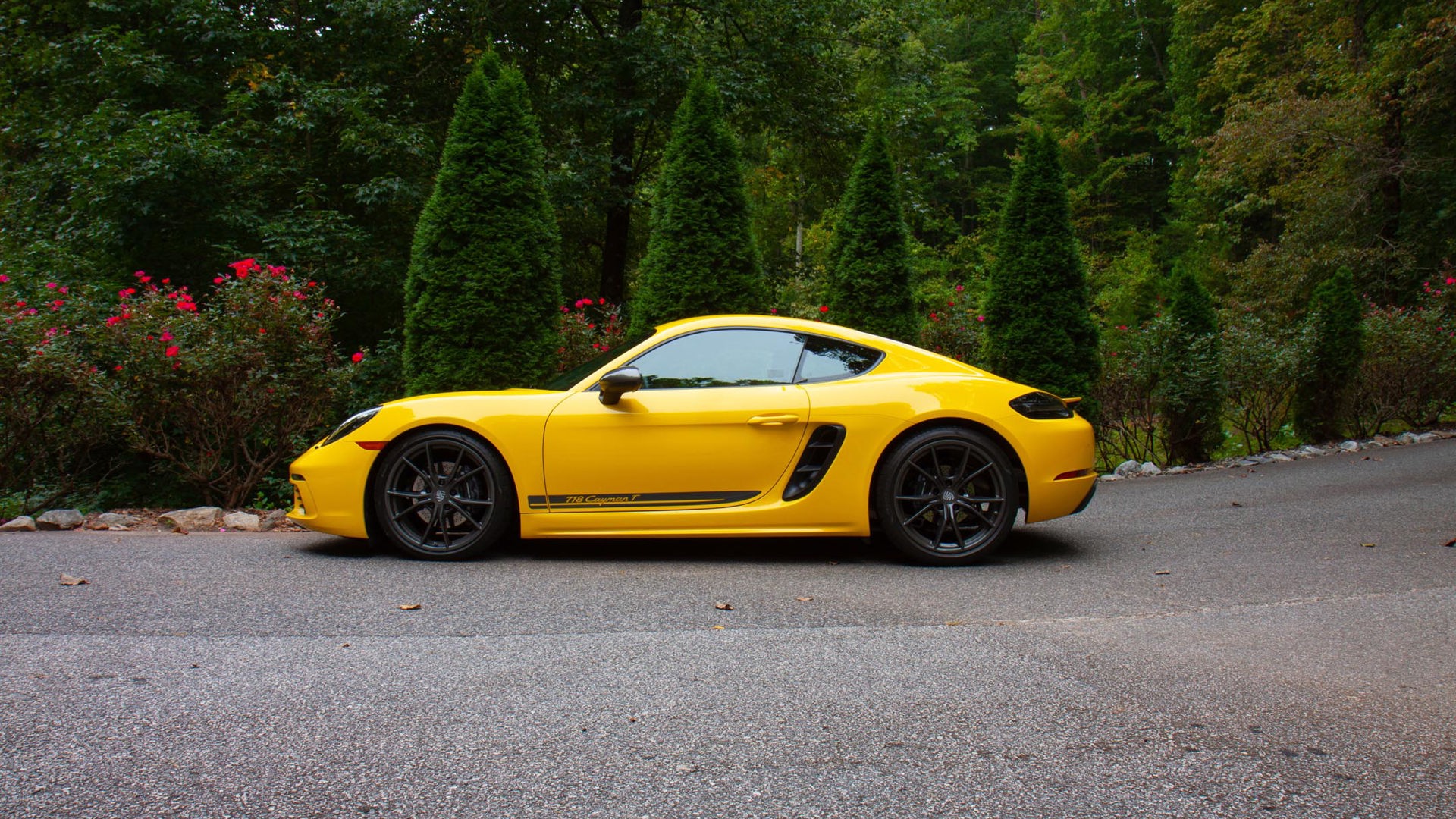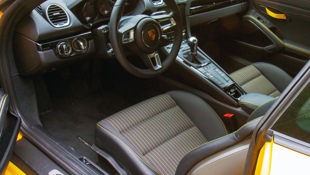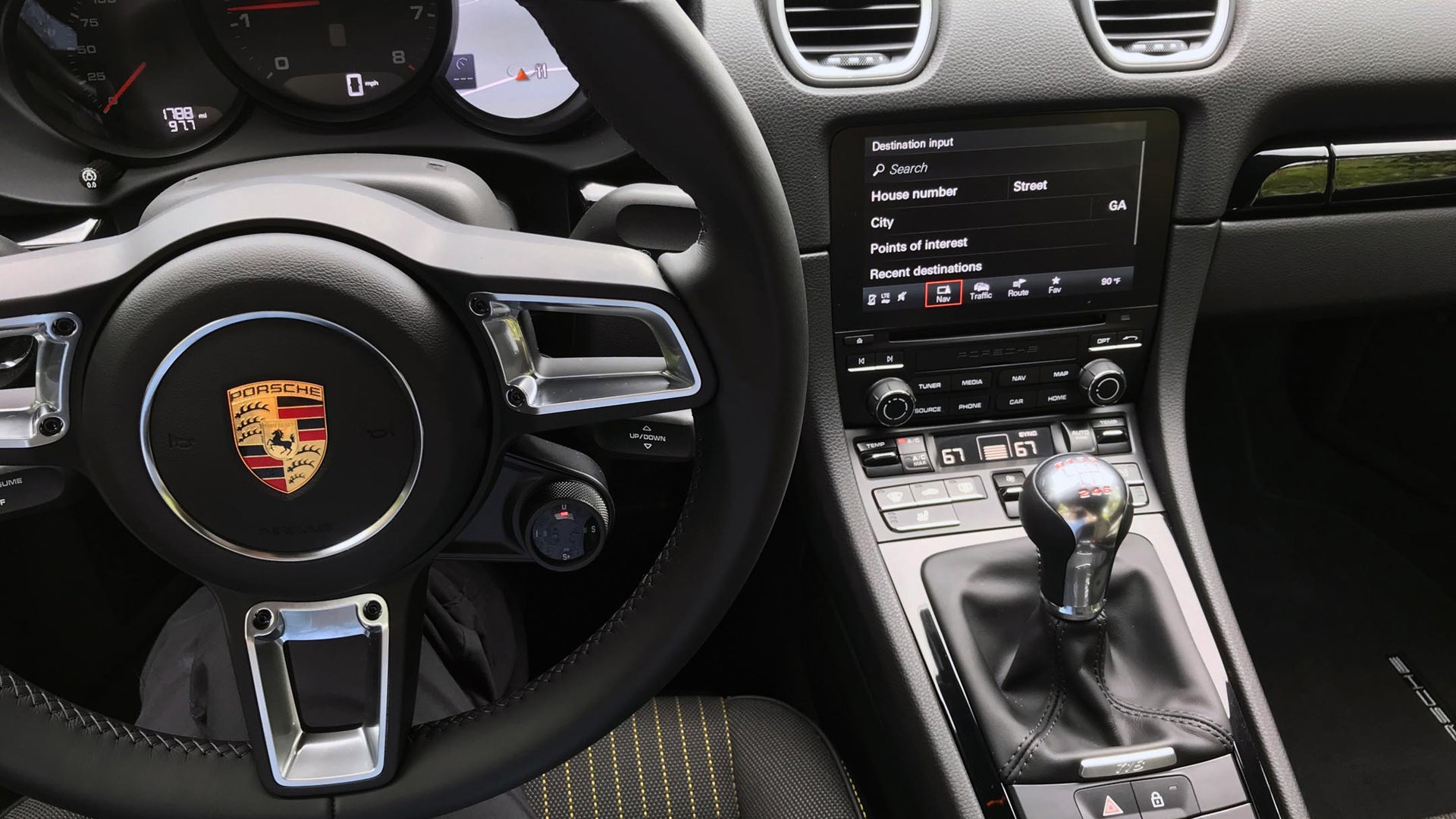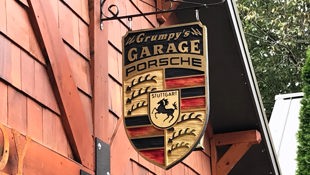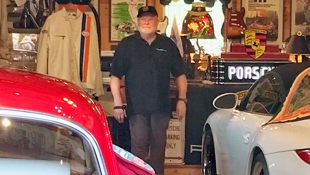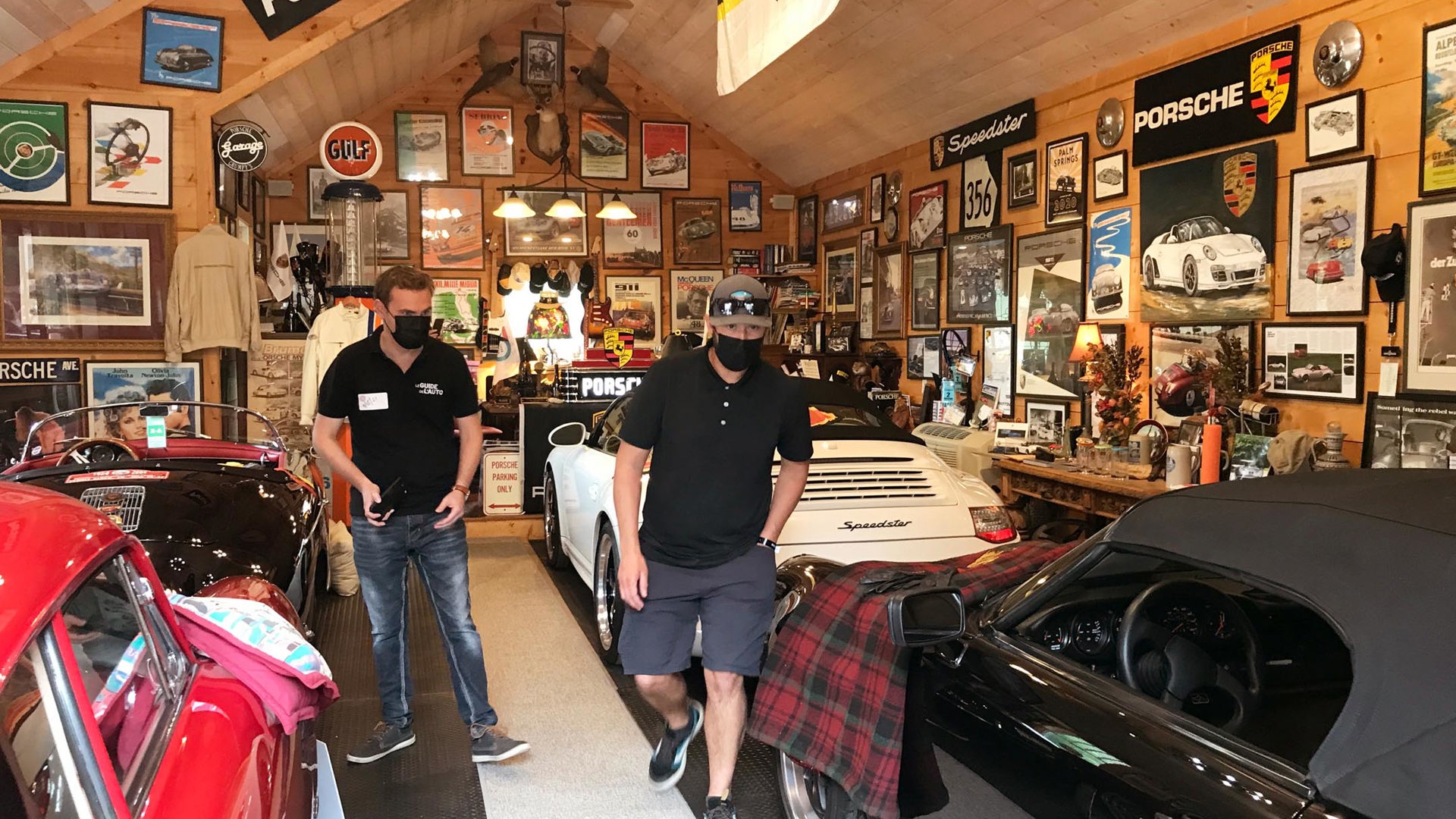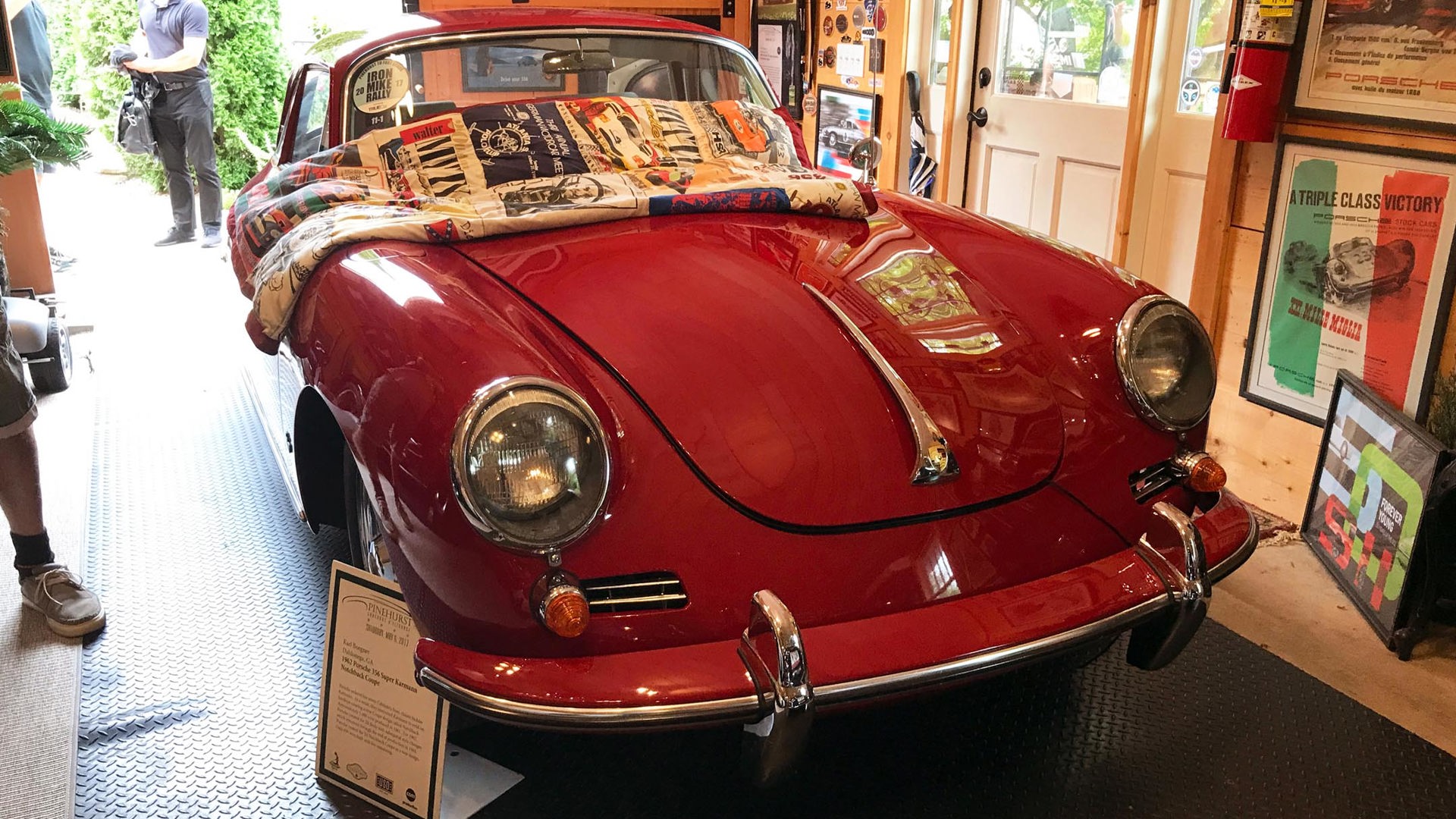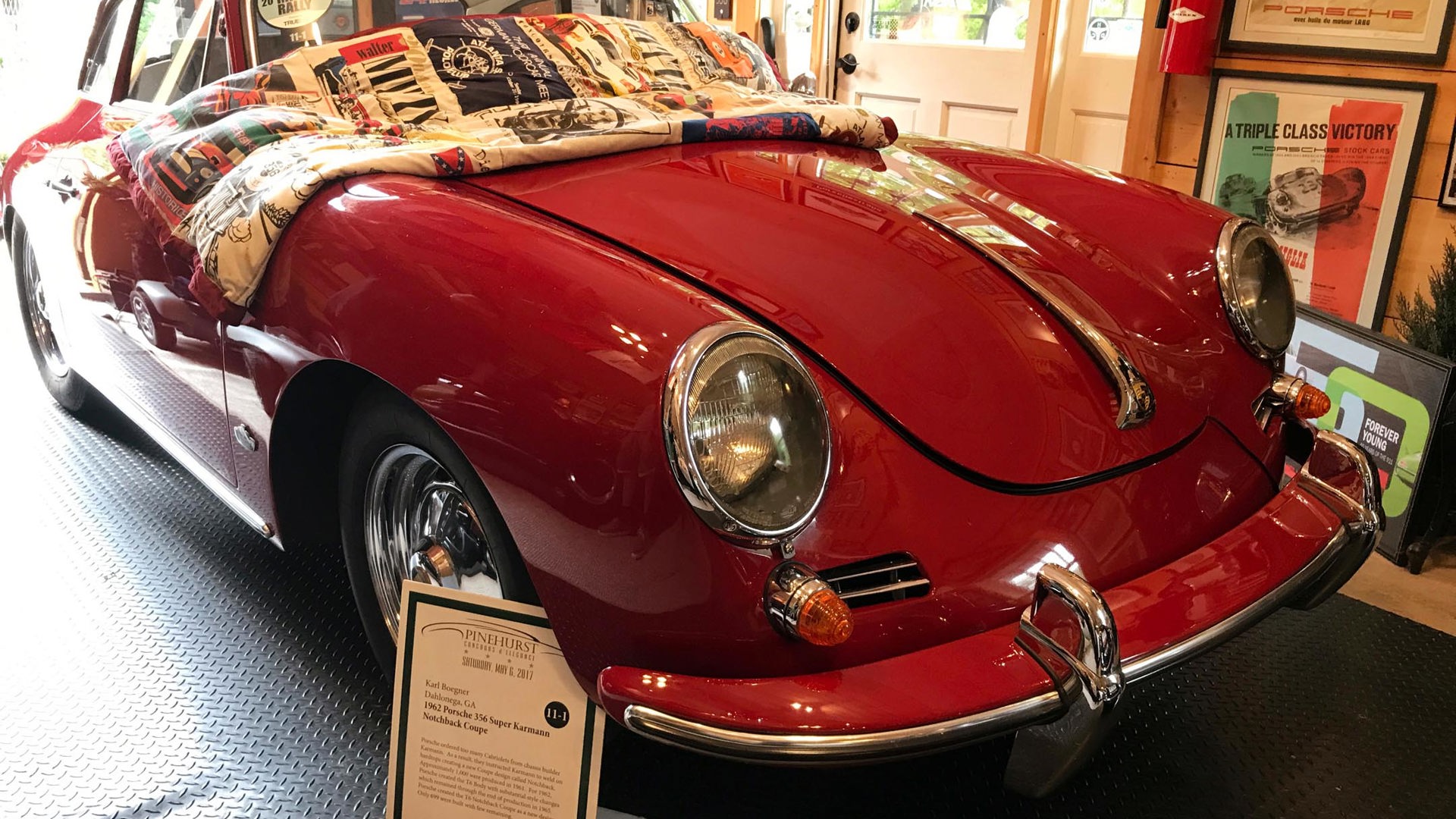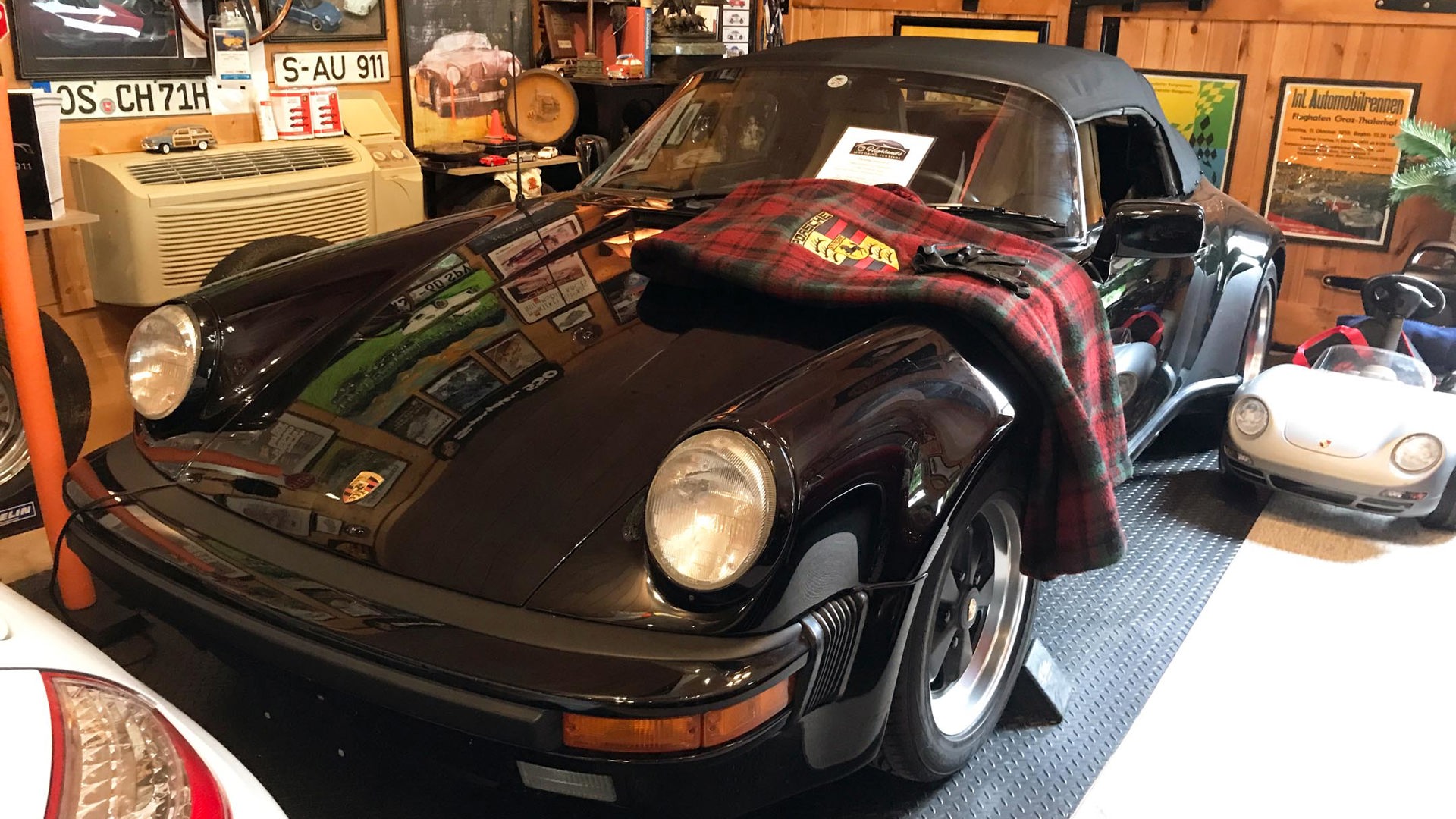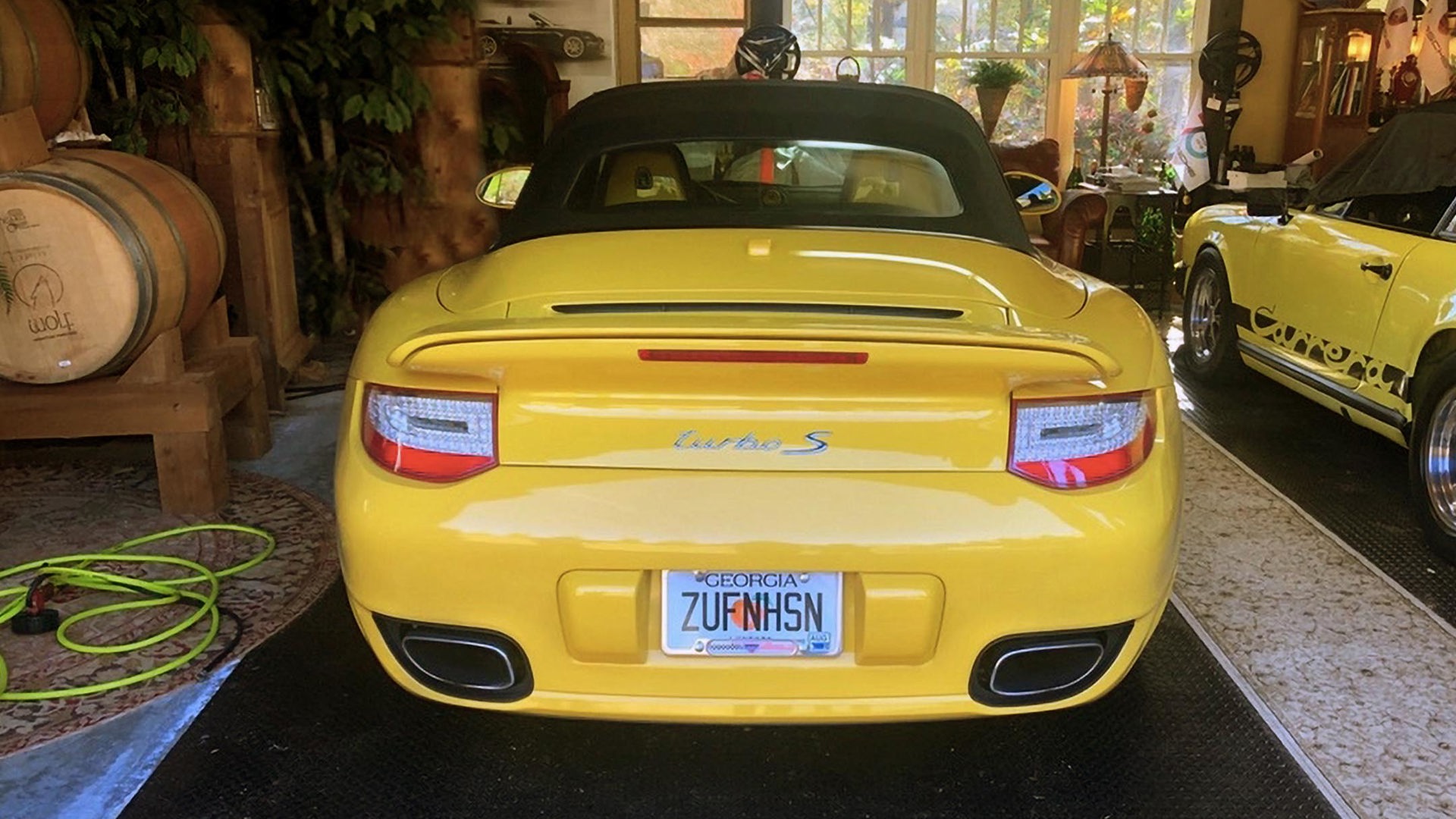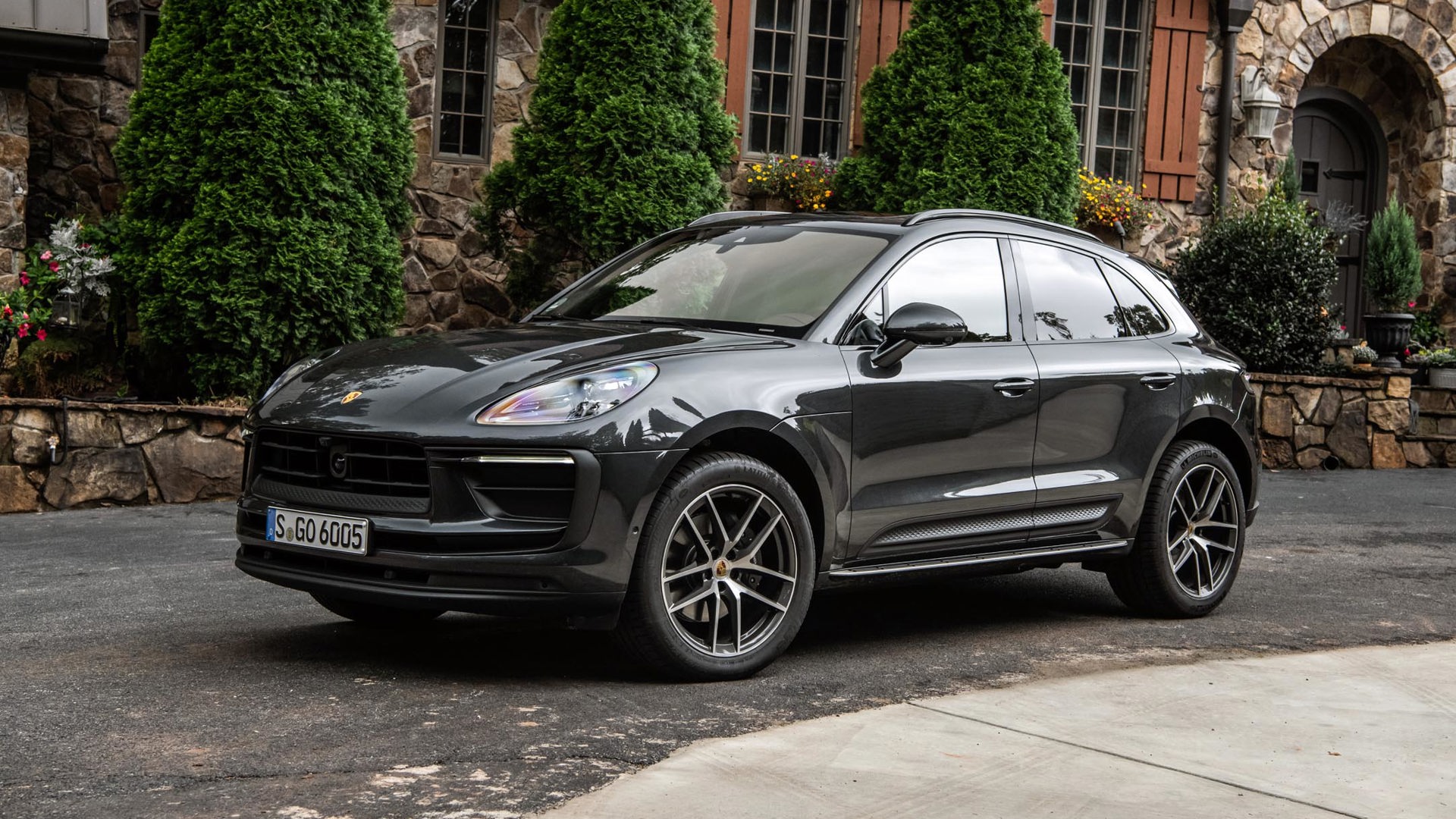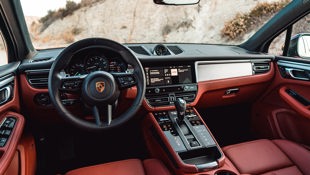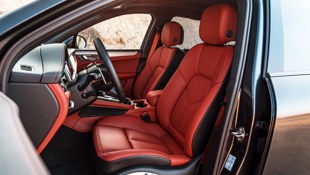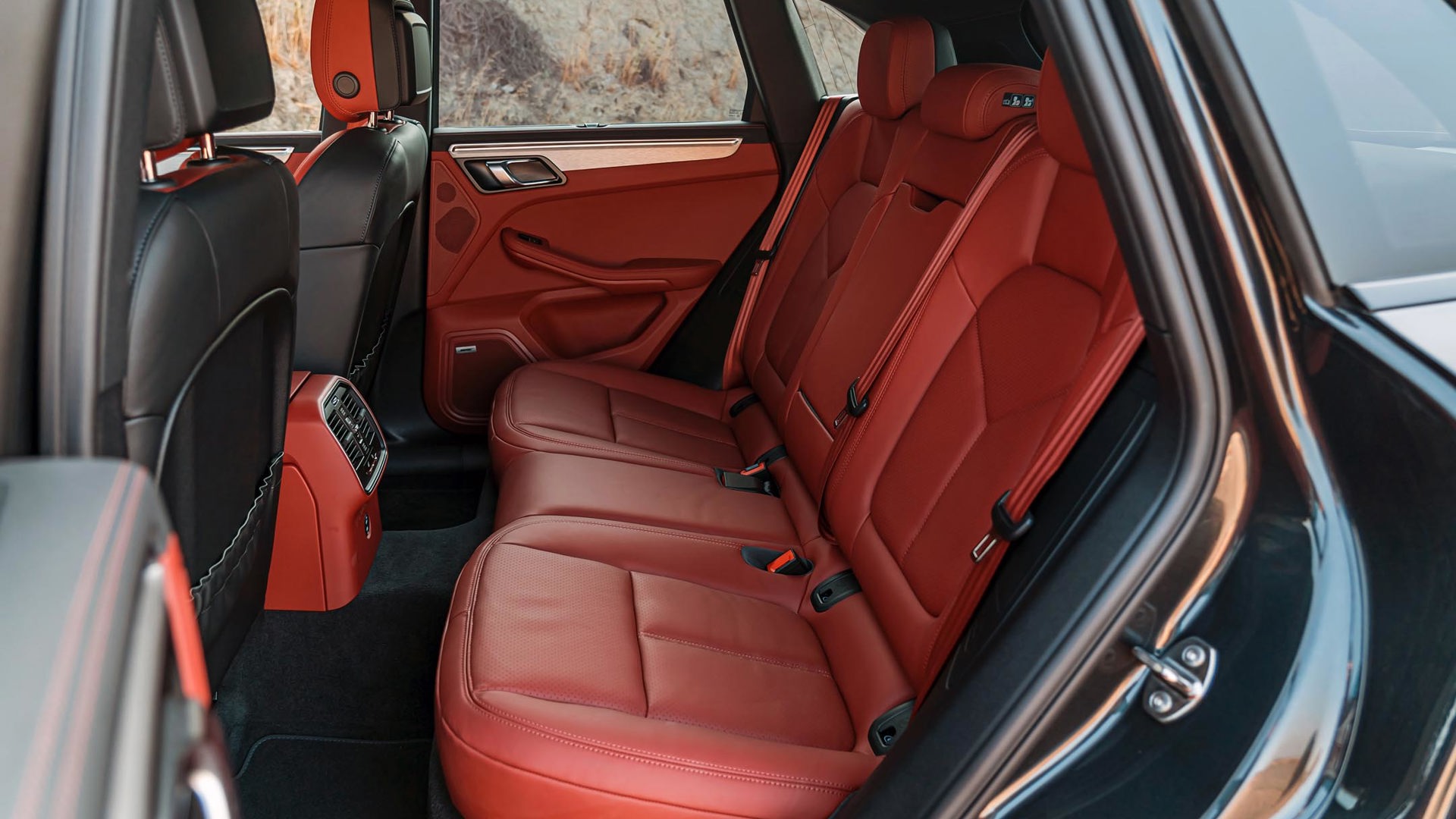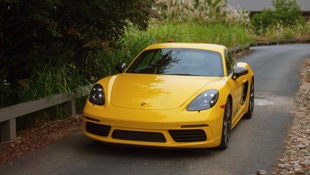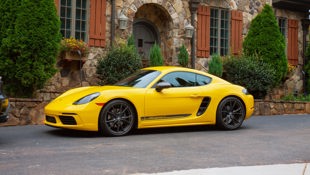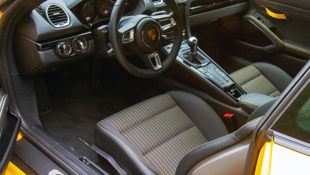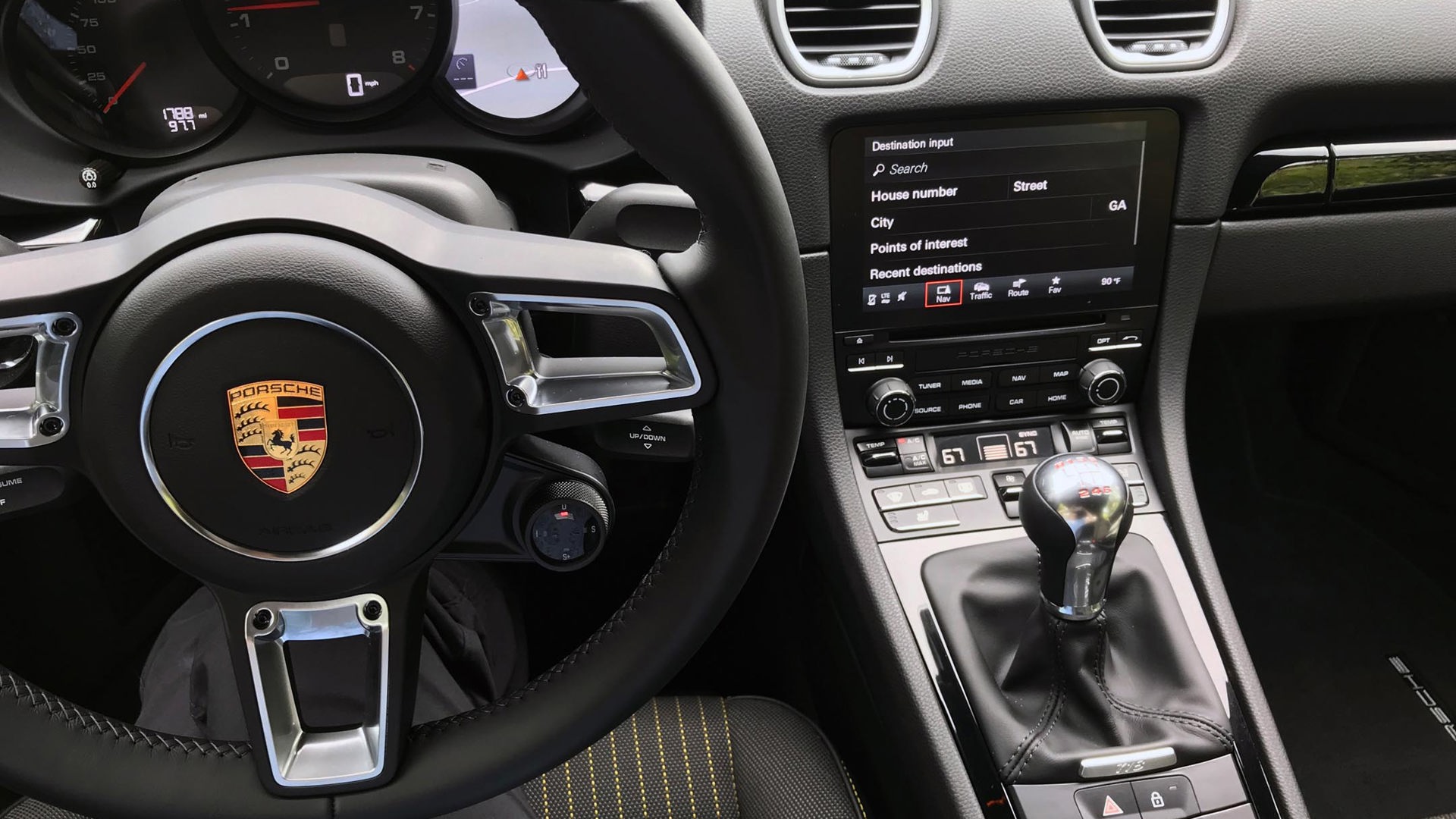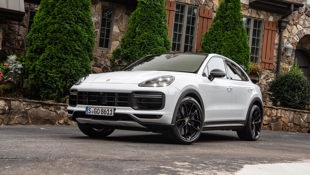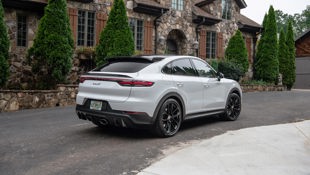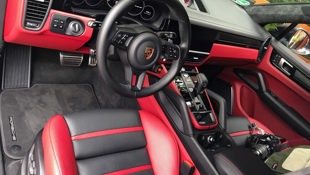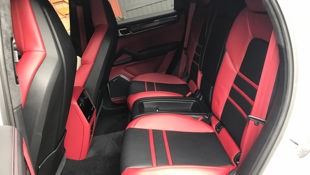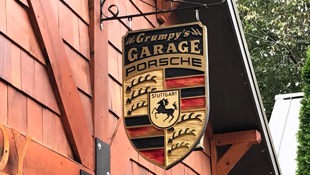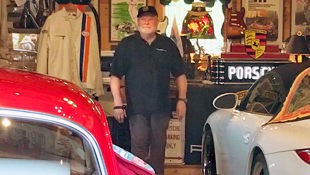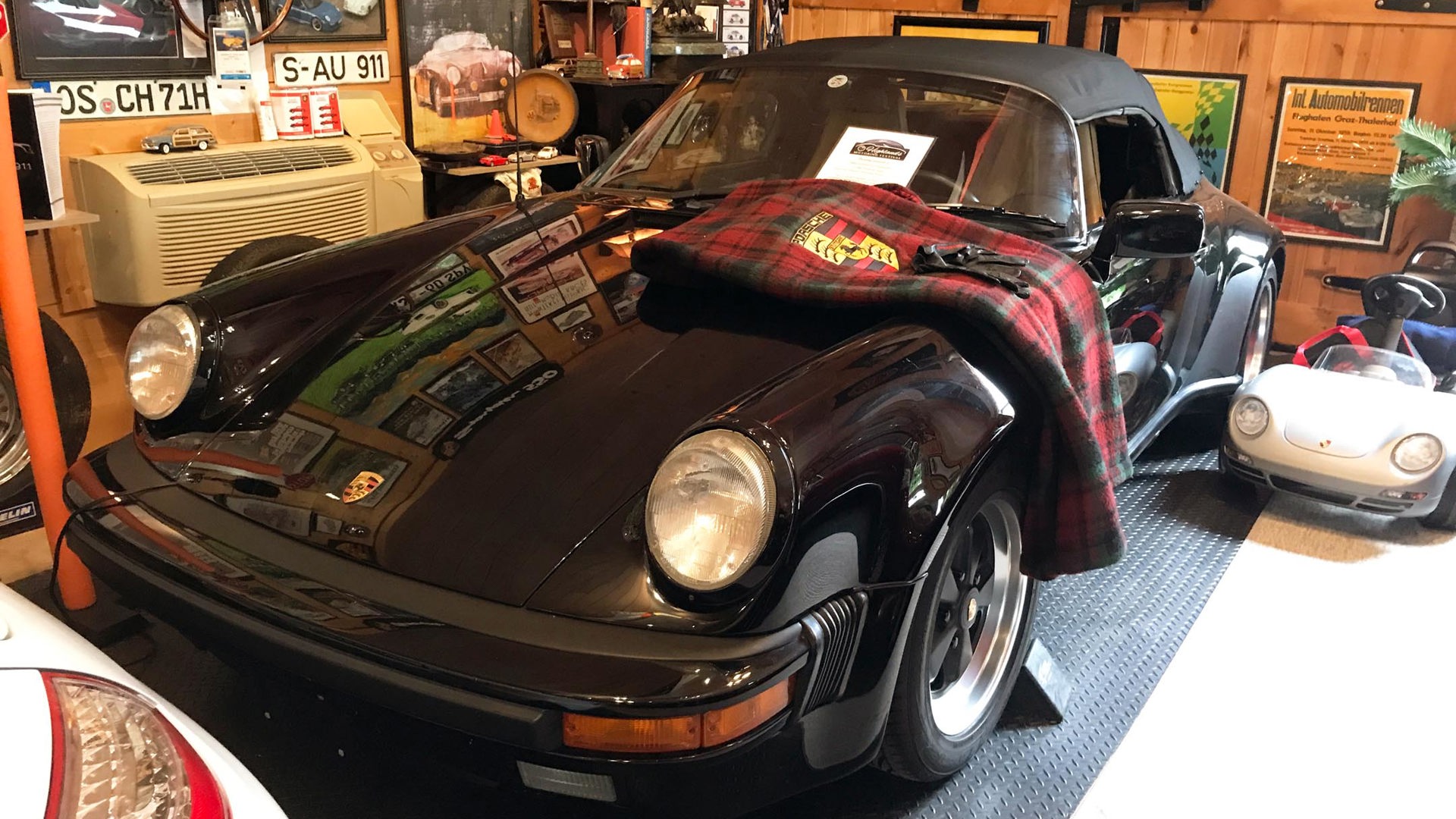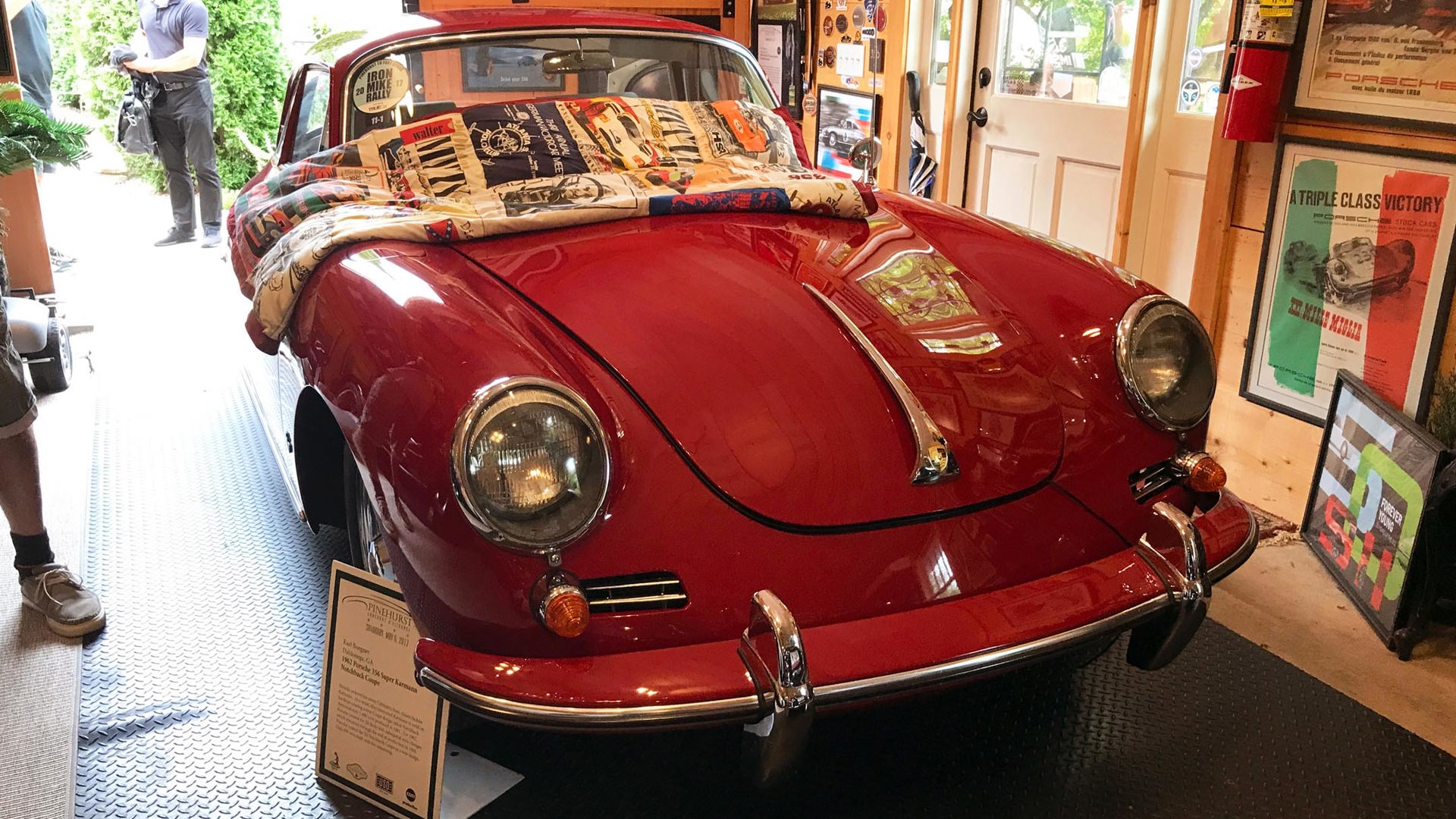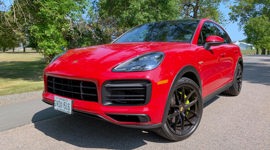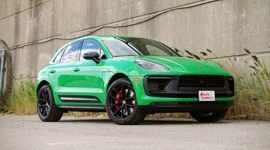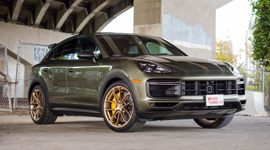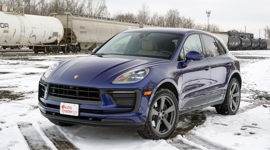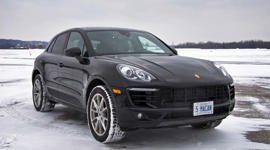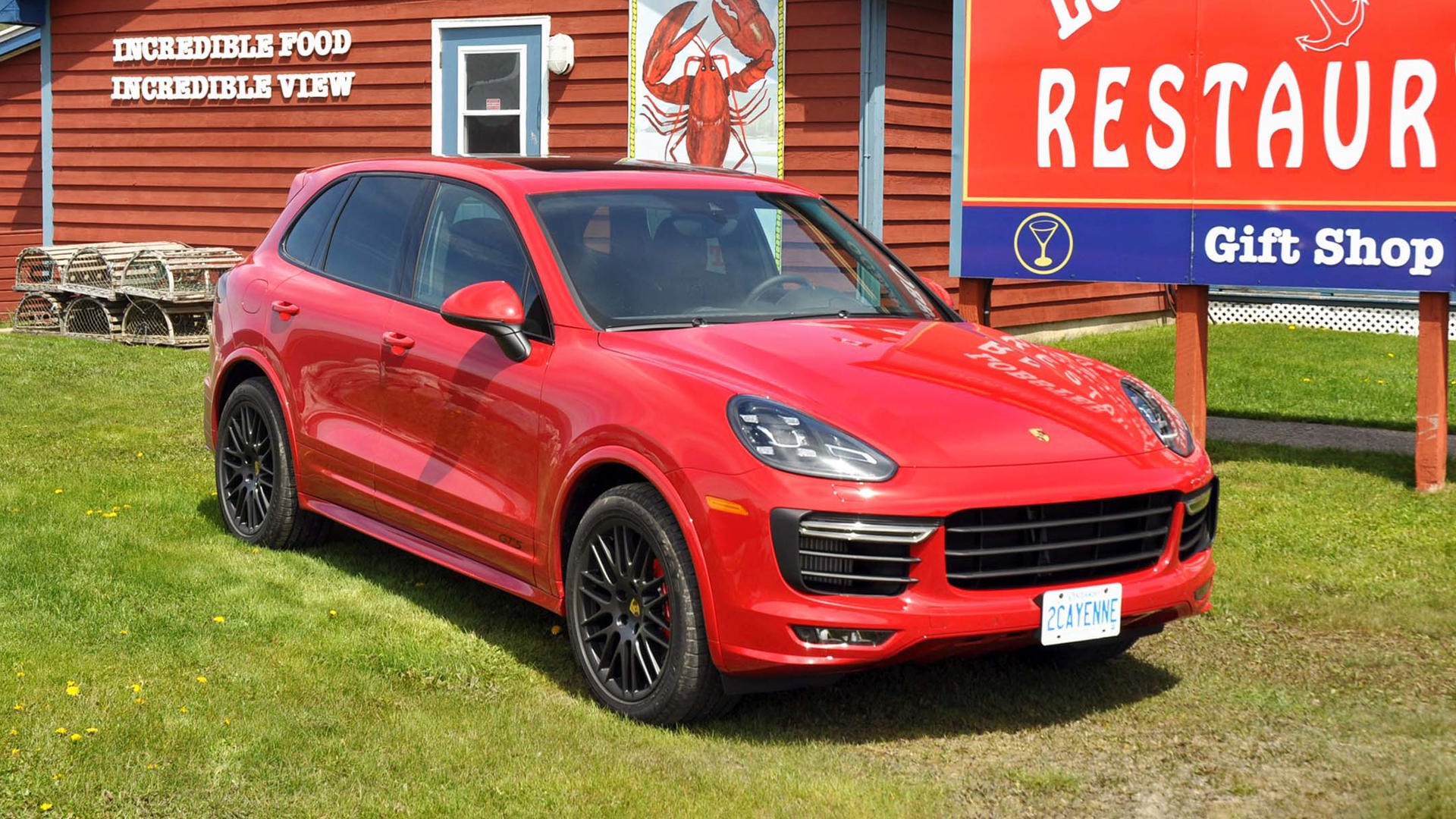By his own reckoning, Karl Boegner has owned more than 100 Porsches in his five decades of collecting.
Boegner, owner and chief winemaker of Wolf Mountain Vineyards in Dahlonega, Ga., a little more than an hour north of Atlanta, began by restoring 356s as a hobby. His current fleet includes a 1958 Speedster that had been bought by Olivia Newton John while filming Grease; and one of only 50 notchback coupes hand-built by Karmann in 1962.
Needless to say, the cobblestone courtyard between the two rustic barns housing his collection was an ideal setting for Porsche to showcase some of its own (albeit much newer) selection. We weren’t able to sample any of Boegner’s collection – it was a strictly look-don’t-touch affair – but we were given free rein to drive the new Porsches through the glorious rolling foothills of rural Georgia. While my weekly road tests are usually book-ended by the palate-cleansing mediocrity of my own daily driver, this was a back-to-back sampling that ranged from the entry-level base Macan to the sublimely competent 911 GTS.
2022 Porsche Macan
In the seven years since we drove the very first Macan at Porsche’s proving grounds in Germany, the compact crossover has proved to be a smashing success. It’s the top-selling Porsche in Canada – a gateway model whose buyers are predominantly new to the brand.
For 2022, the Macan lineup has undergone a shakeup, with the Turbo model axed and the GTS moving in to take its place. Befitting of its new status, the GTS receives the Turbo’s 434-hp twin-turbocharged V6, while the GTS’s old 375-hp V6 finds a new home in the Macan S. The base Macan’s 2.0L turbo four-cylinder is now boosted by 13 hp and 22 lb-ft of torque to 261 and 295, respectively.
All Macans receive an external freshening-up that includes a new fascia, additional wheel choices, and a broader colour palette. Inside, the cabin now features the same minimalistic design that’s made its way through the rest of Porsche’s lineup. The bisecting console with its vast array of buttons gives way to piano black touch panels and a more compact gear selector. A new 10.9-inch display boasts quicker tap and swipe response, as well as an updated interface that now features wireless Apple CarPlay connectivity (but no Android Auto – yet).
At $58,500 before freight and tax, the base Macan is the least expensive vehicle in the lineup; however, it’s still a Porsche, and the starting price is just a foot in the door. By the time you’ve factored in the $4,430 Bordeaux Red (how fitting) leather interior, $3,140 adaptive air suspension, $2,640 20-inch wheels – and, of course, the advanced safety upgrades that are often standard with lesser brands – our “entry-level” Macan topped out at a hefty $92,420.
It may be the cheapest, slowest, and least powerful Porsche made, but the Macan is still one of the very best handling compact crossovers you can buy. A beautifully balanced chassis augmented with adaptive air suspension gives it the ability to tackle curves like a sports car, while the steering delivers immediate feedback to the driver. Its six-second zero-to-100 km/h may not be the quickest in the Macan lineup, but paired with the brilliant seven-speed dual-clutch automatic transmission, the turbo-four’s 1,800-rpm peak torque delivery imparts a responsiveness that makes it feel much quicker than it is.
But there will always be buyers for a faster Porsche, and that’s where the Macan S comes in. With the optional Sport Chrono package, the S sprints from a standstill to 100 km/h in 4.6 seconds. It feels less light and lively than the four-banger, but thanks to torque vectoring and active suspension management, it tackled Georgia’s forested curves with an aggressive competence that almost made you forget that it wasn’t a 911.
The Macan S starts at $70,600, but such additions as the $6,680 leather interior, $3,350 sport exhaust, $4,940 21-inch wheels, and $3,990 brakes helped bring the price of our tester up to $113,820.
2022 Porsche 718 Cayman
It’s at the other end of the spectrum from the ferocious GT4 RS, but in its own way, the Cayman T is every bit as satisfying. I mean no disrespect whatsoever by referring to it as the Mazda Miata of the Cayman lineup. For aficionados of sports car purity, this pared-down Cayman is a stripped-down two-seat delight.
Take a base four-cylinder Cayman, add a little lightness, and essentially what you get is the Cayman T. Our Racing Yellow tester had no fancy air suspension, no torque vectoring system, and no adaptive damping; but it was just as much fun to toss around the winding forest roads as some of the more technologically sophisticated Porsches on offer. Those features are available if you want them, but the bulk of our tester’s $9,000 in options were the connectivity system, interior package, and a trick set of tinted taillights, bringing the total to $86,970 from the $77,900 starting price.
This is the kind of car that appeals to those who love driving for its own sake, who appreciate a lightweight coupe that prioritizes road feel and handling over tech and comfort. Right behind the driver is a flat four-cylinder that makes 300 hp 280 lb-ft of torque; and while it may not emit the same delicious burble as the six-pot Caymans, it makes up for it with better weight balance. The six-speed manual transmission is a joy to operate, but if executing a perfect heel-and-toe downshift isn’t your thing, there’s an optional dual-clutch automatic with launch control.
The optional sports seats in our tester are perfect for the performance car enthusiast, but probably too rigid, thinly cushioned, and highly bolstered for the average driver. Lightweight doors are operated by pulling a nylon loop instead of a weight-adding handle.
With no electronic nannies to intervene – other than standard traction control and antilock brakes, of course – the Cayman T forces the driver to engage and actually be present. The mid-engine chassis layout is so nicely balanced that miscalculating a turn can usually be fixed by a slight correction of inputs instead of ending in disaster.
You don’t have to drive this car fast to enjoy its fabulous handling, communicative steering, and great feedback. It’s the perfect car for those who enjoy the journey more than arriving at their destination quickly.
2022 Porsche Cayenne
The Porsche Cayenne Turbo GT might be the answer to a question no one has asked. Well, it’s more likely the answer to well-heeled Porscheophiles asking “now what?” Surely we don’t expect them to be content with driving the same mundane SUV as their dentist or mortgage broker. So here we have it – the most ludicrously powerful Porsche SUV ever produced. The twin-turbo V8 produces 631 hp and 626 lb-ft of torque, and Porsche says it’s the most powerful V8 it’s ever built. Zero to 100 km/h times for the 2,195-kg (4,839-lb) behemoth is 3.3 seconds – comparable to the track-ready 911 GT3.
Available only as a “fastback coupe,” which these days refers to a rounded topline instead of the number of doors, the Cayenne Turbo GT isn’t the most practical choice. It seats only four, and thanks to its centre-mounted dual exhaust pipes and rear diffuser, does not tow. But it’s fast enough to have set a new record for SUVs at the Nürburgring, which everyone knows is the gold standard when evaluating SUVs. [Sarcasm is most definitely implied here, dear reader. – – Ed.]
There are several other features that set the Turbo GT apart from regular Cayennes. There’s no sunroof option; instead, there’s a lightweight carbon-fibre panel. There are wider air intakes, a carbon fibre rear diffuser, and there’s a half degree of negative camber in the rear wheel stance. Carbon-ceramic brakes measure 17.3 inches up front and 16.1 inches in the rear.
Our Carrera White tester has a base price of $200,700, but once you’ve factored in all the options, including $4,110 for its sophisticated adaptive cruise control, $6,620 for the stereo, $2,750 for night vision, and $1,030 for the upgrade brakes, just to name a few, it tops out at $230,495.
But for that you not only get the fastest SUV on the market, but you’ll find the Cayenne Turbo GT will satisfy nearly all your luxury and comfort requirements, too. The Bordello Red leather seats are cushy and eight-way adjustable, and the cabin feels solid and well-crafted. It’s a perfectly respectable daily commuter, beautifully insulated against outside noise intrusions, and a quiet place to relax in traffic, especially with adaptive cruise control employed.
But switch the steering wheel-mounted dial to sport+ and it’s like waking the sleeping dragon. Crackles and gruff barks emanate from the titanium exhaust, and shift and throttle responsiveness gain a hair trigger. The 22-inch wheels are wrapped with Pirelli P Zero Corsa sticky rubber – which Porsche had repeatedly emphasized prior to our test drive – and prove a bit slick in the shady portions of our rainy, forest drive.
Acceleration is stupefying; multi-syllable profanities are almost guaranteed. The automatic transmission is one of the most brilliant gearboxes ever produced, and in this case is perfectly matched to such prodigious power. Gear shifts are ripped off faster than a blink of an eye, accompanied by a melodious booming from the exhaust. Loaded with the best of Porsche’s handling and chassis technology, this large SUV handles curves with the aplomb of a sports car.
Is the Cayenne Turbo GT absolutely ridiculous? It sure is. But there’s no denying that sometimes our lives are made richer by embracing the preposterous. Well, richer lives, that is.
Final Thoughts
While some of Boegner’s heritage collection pre-dated the current models by nearly seven decades, the shared lineage was evident and their presence lent a continuity and connection to the past. After a full day of driving, it feels like Porsche’s managed to maintain that continuity throughout its new lineup, from the two-seater coupe to the brand’s largest and most powerful SUV.
